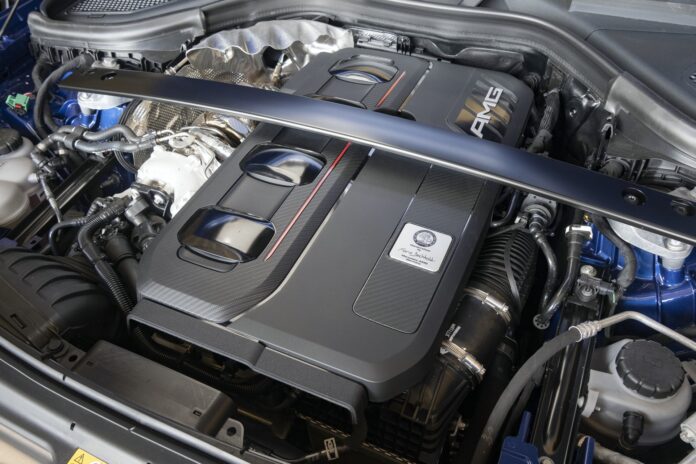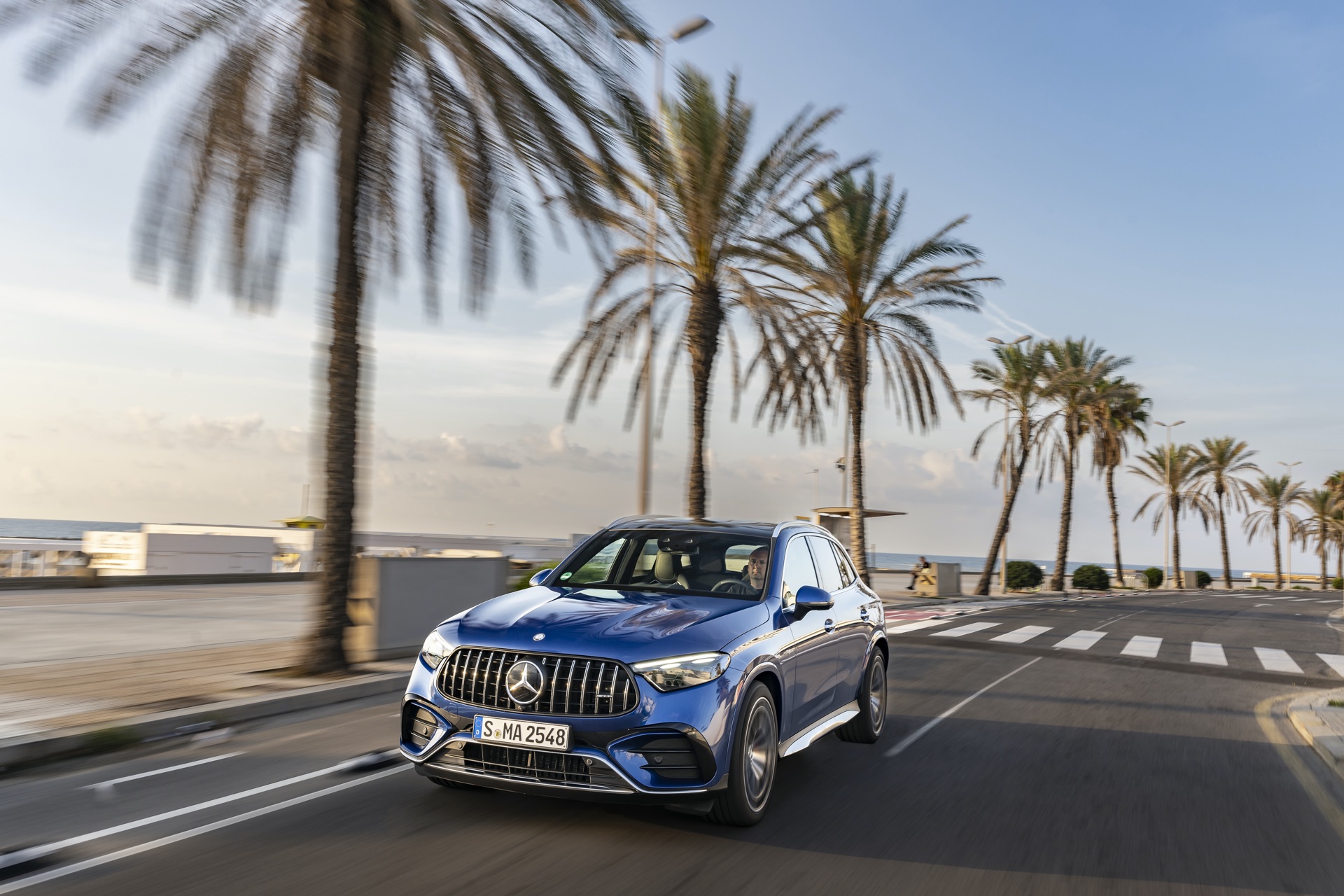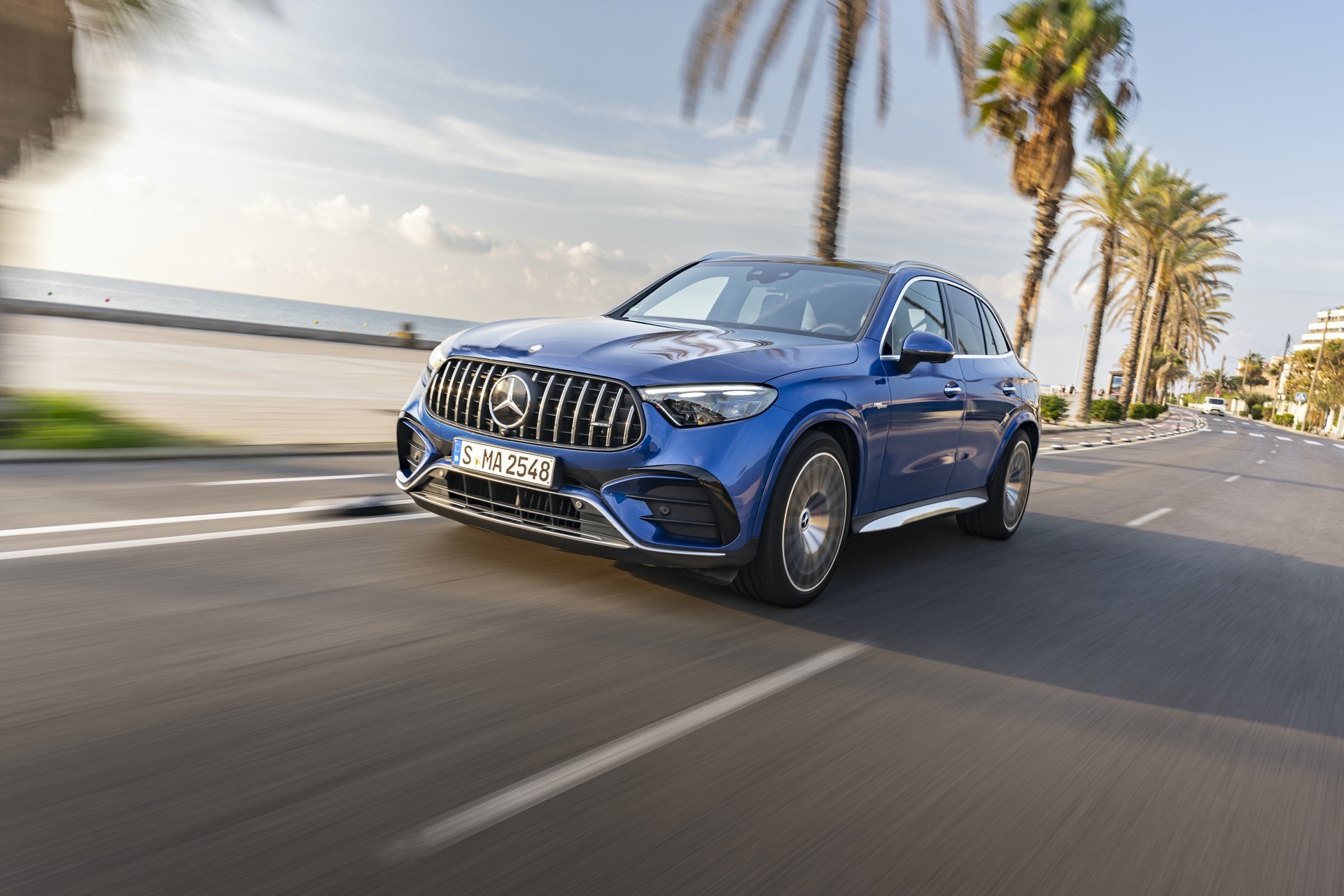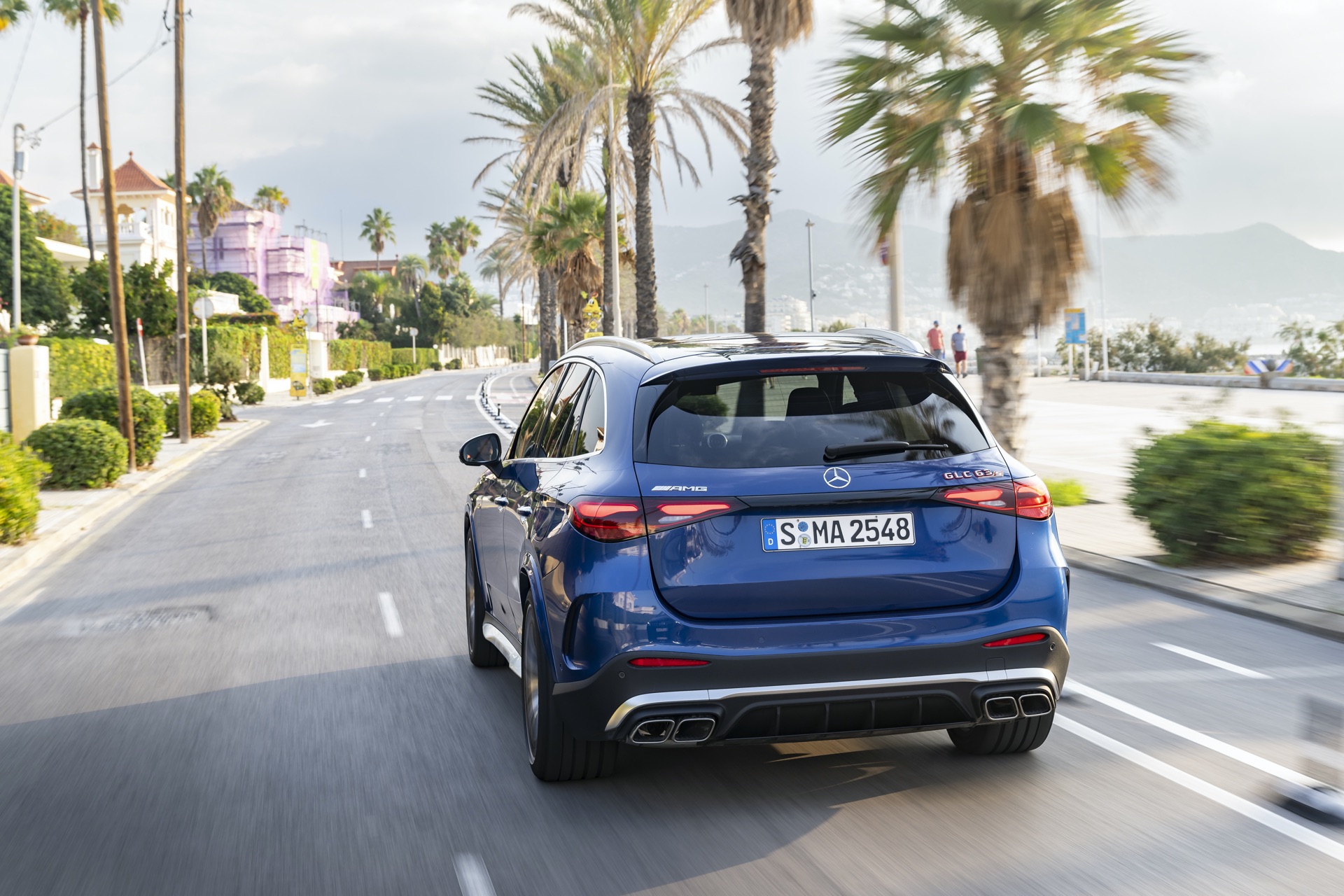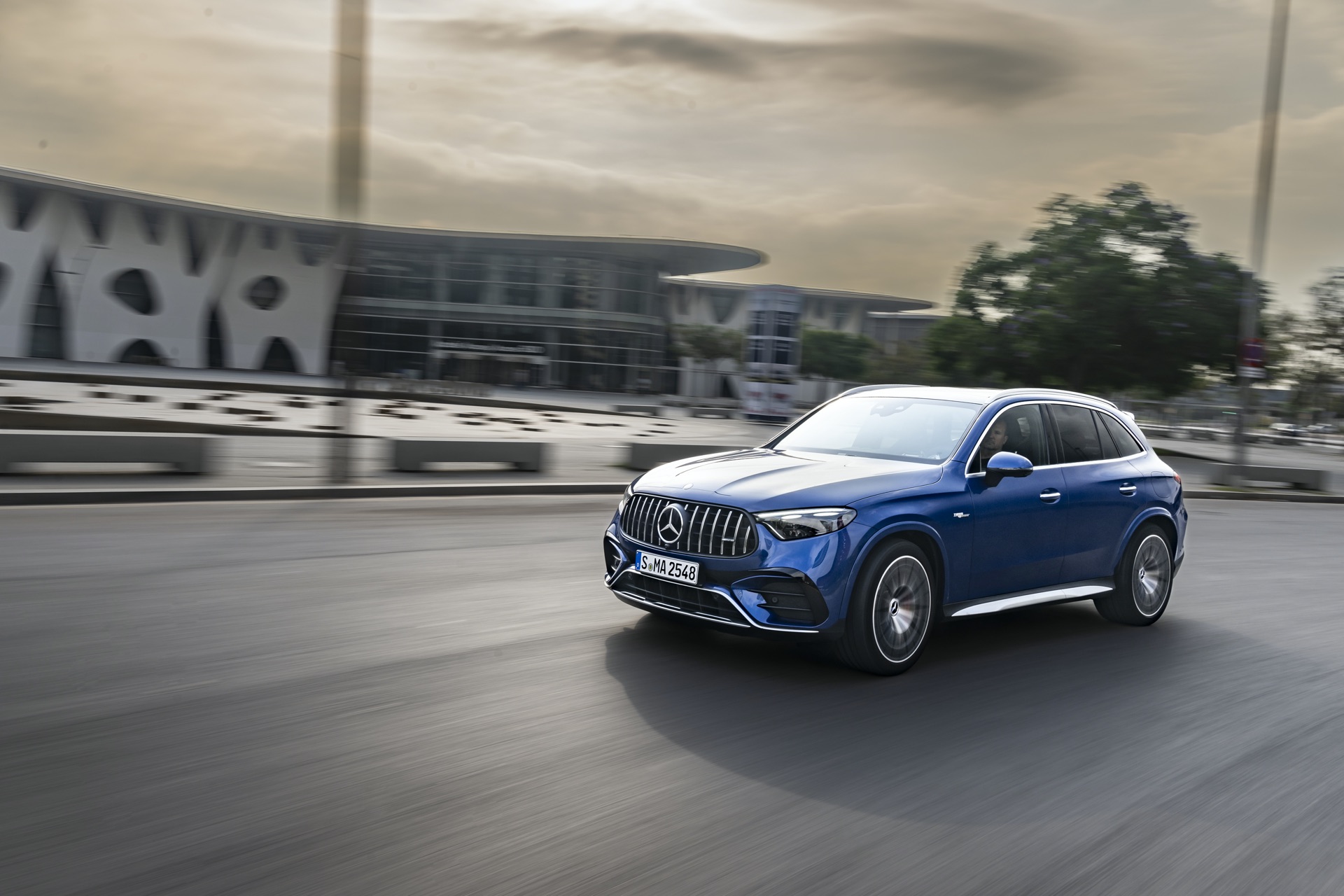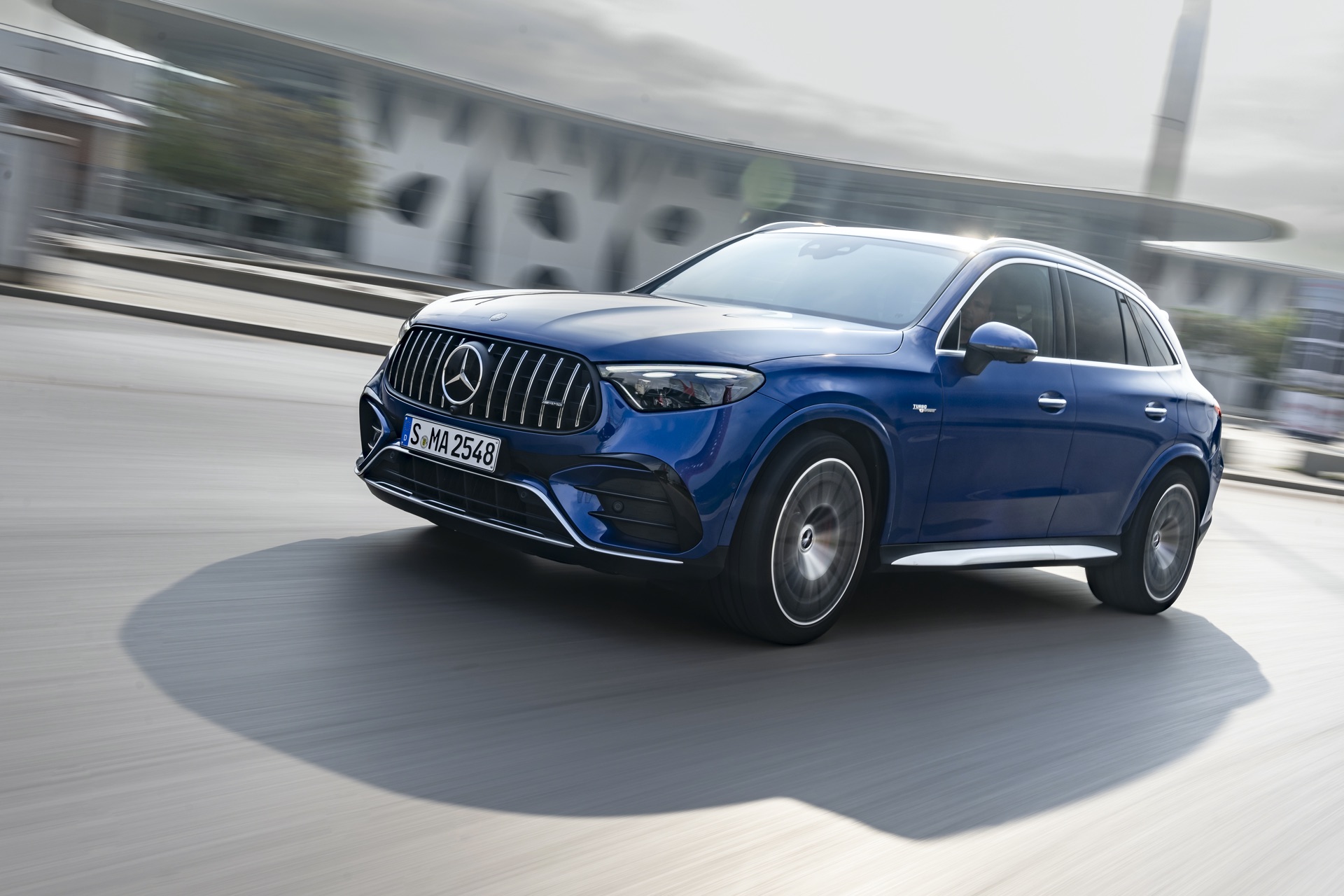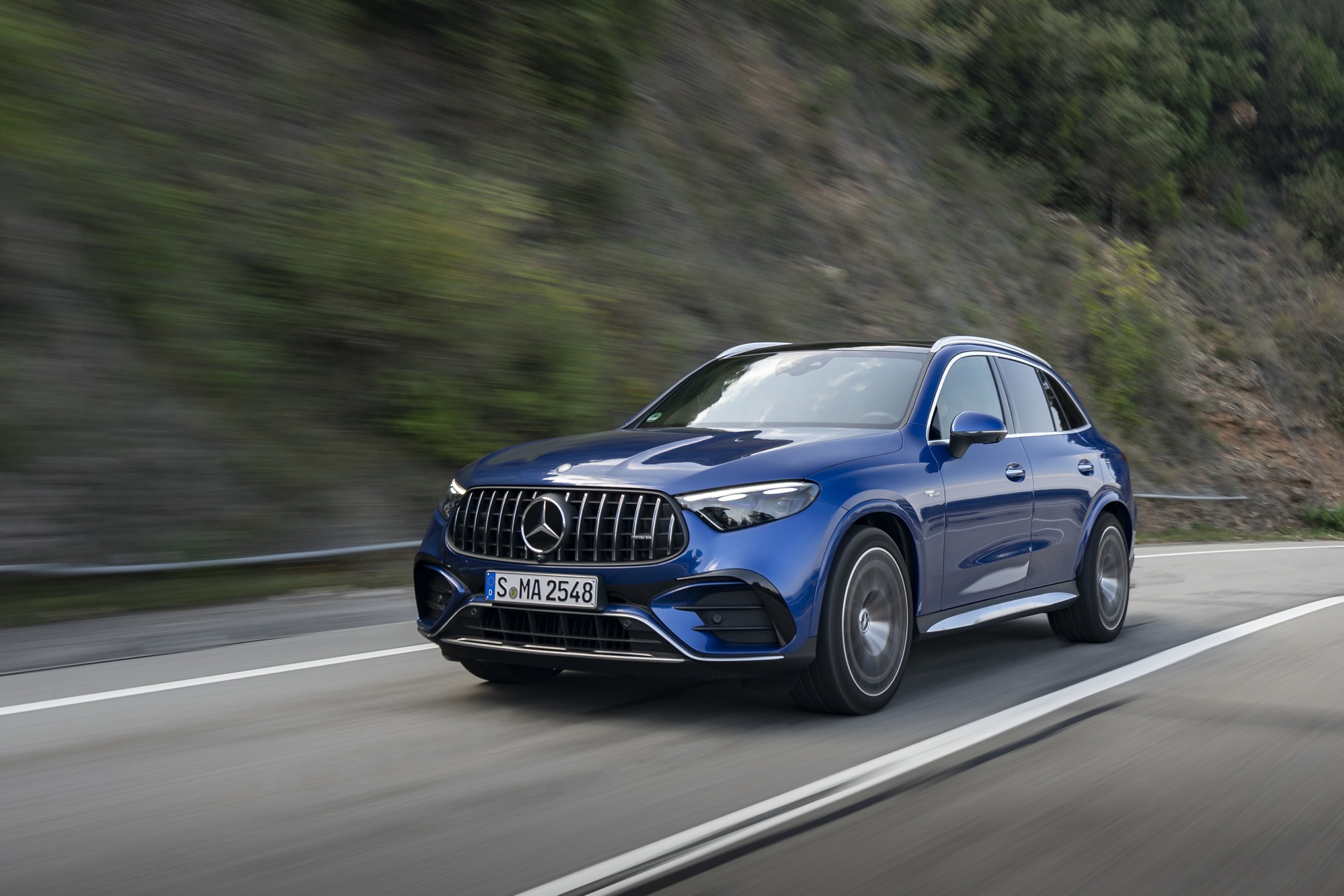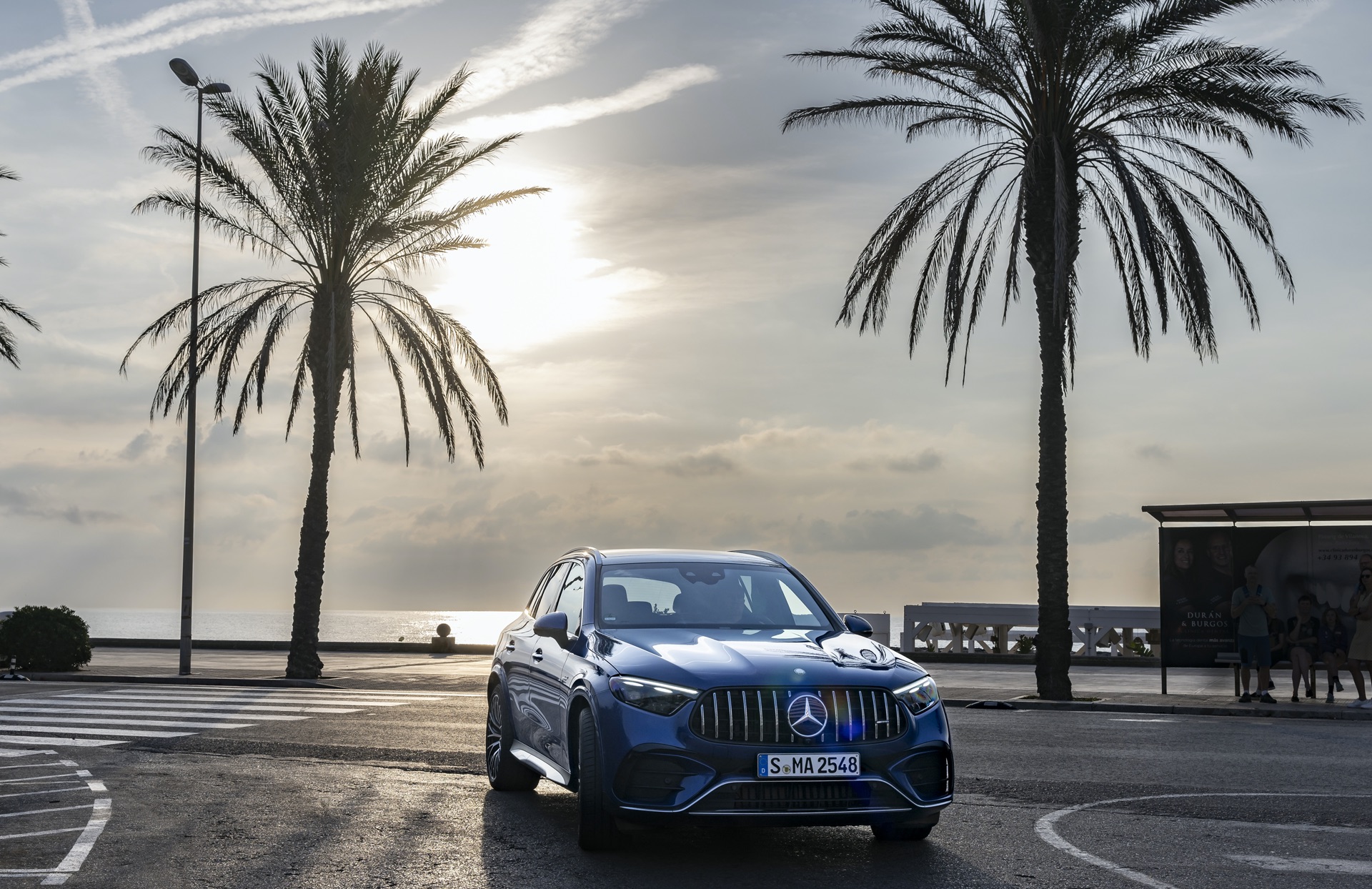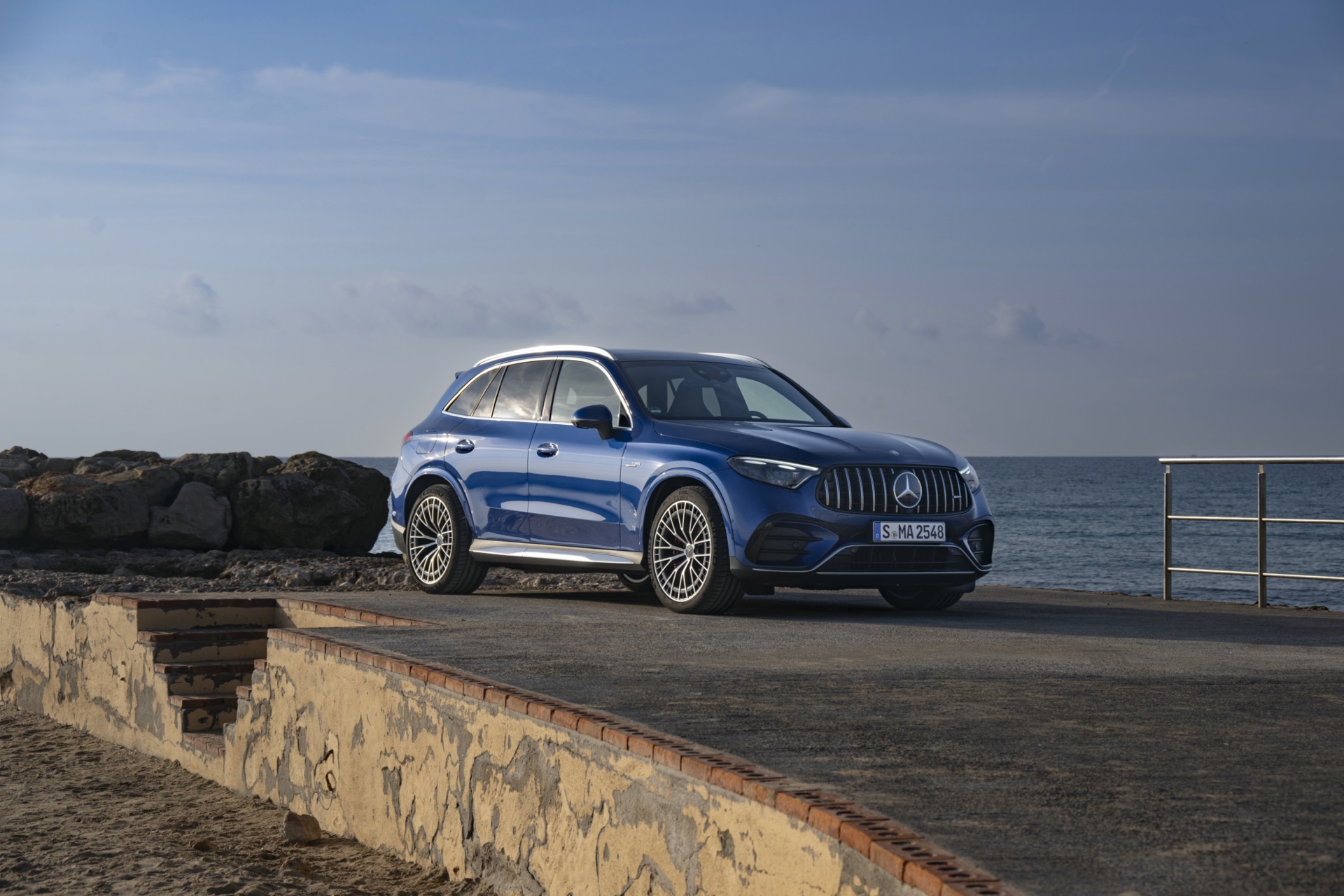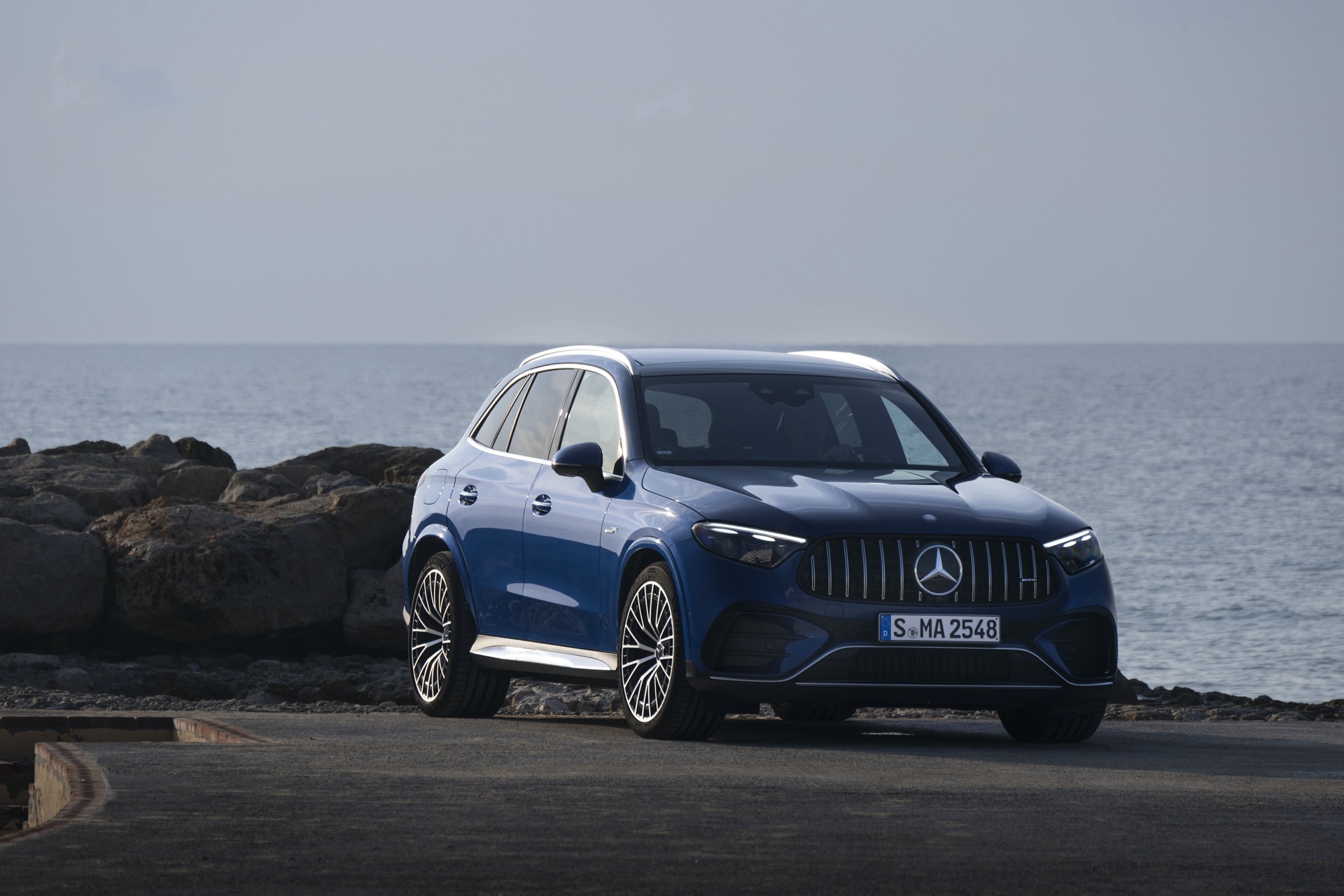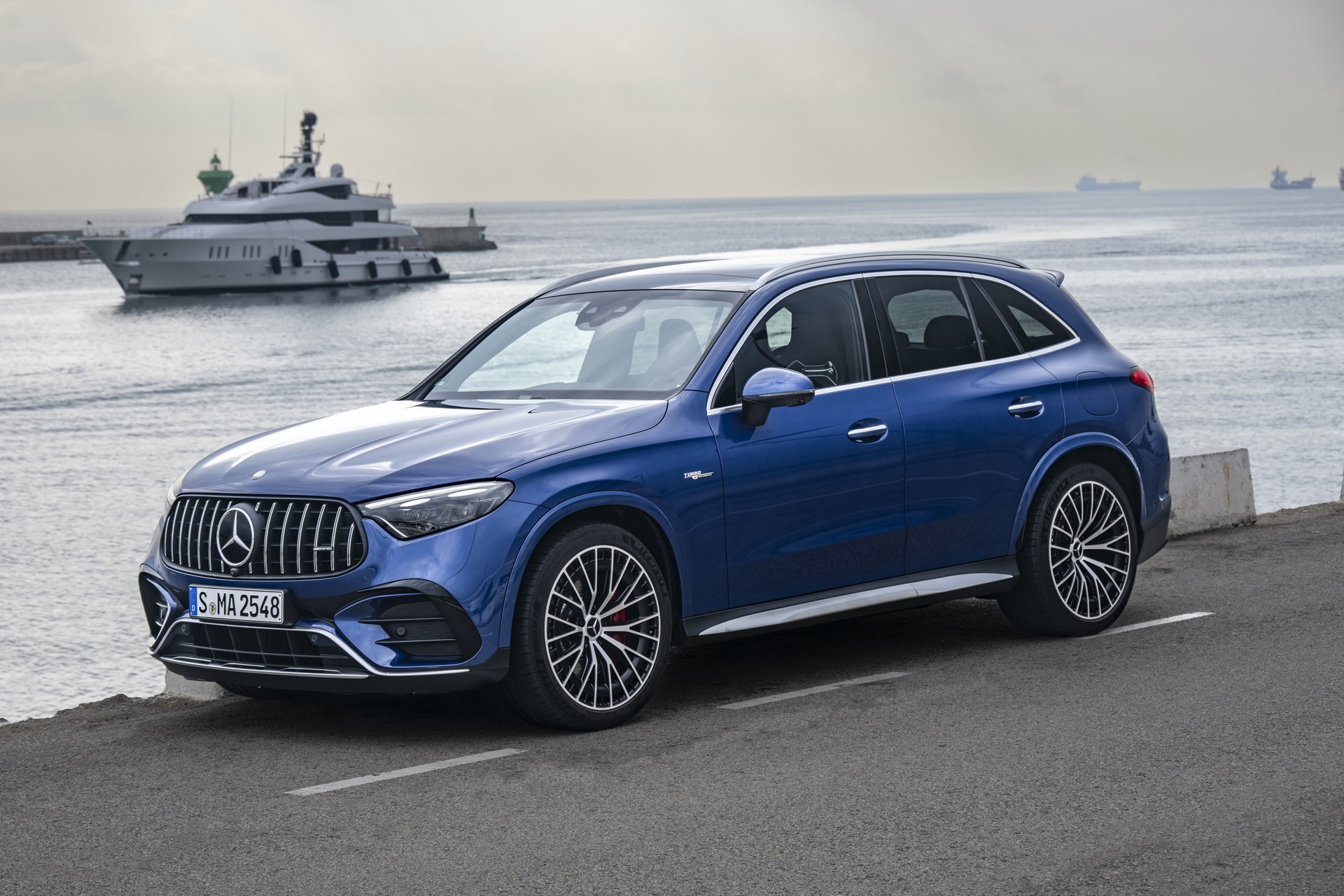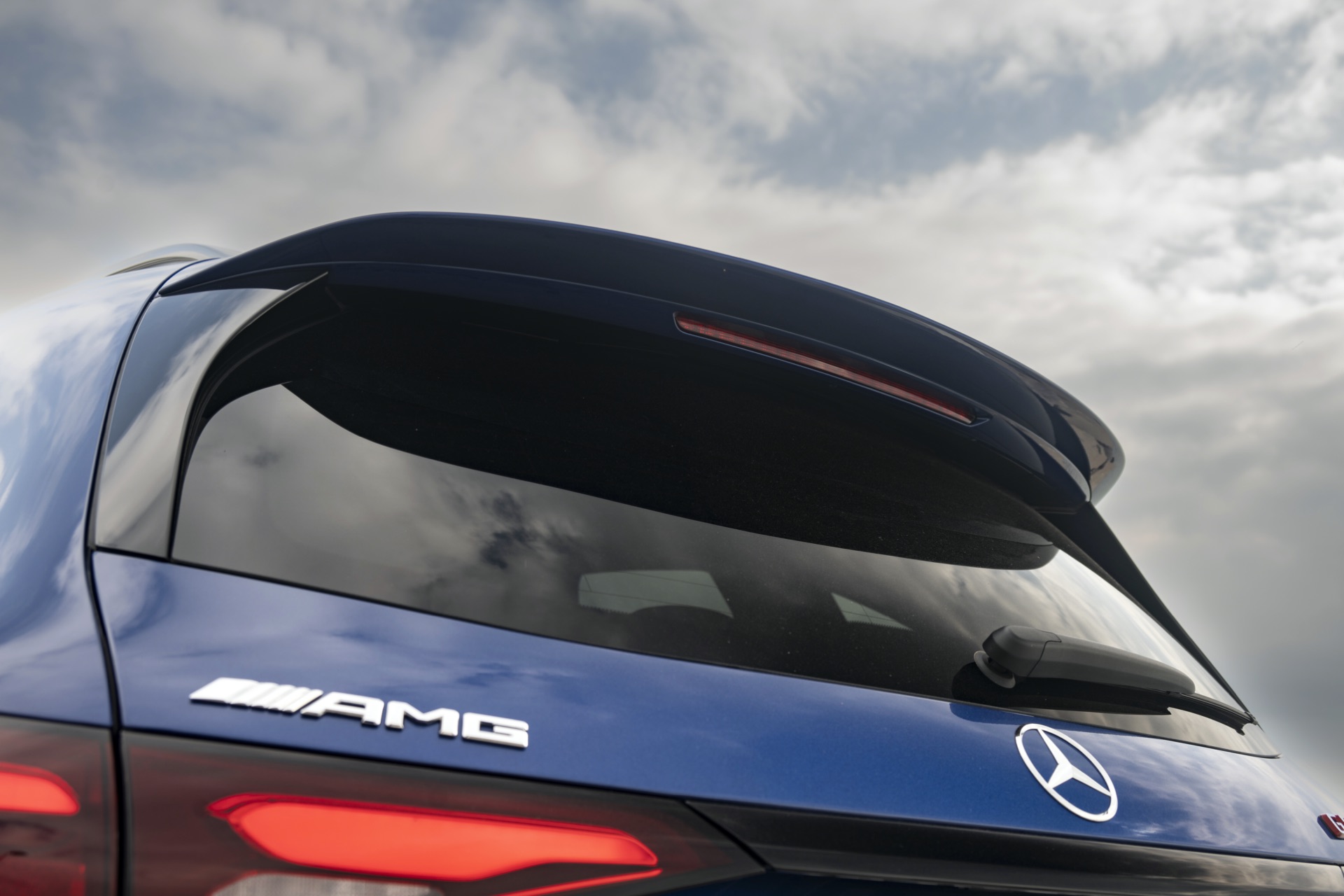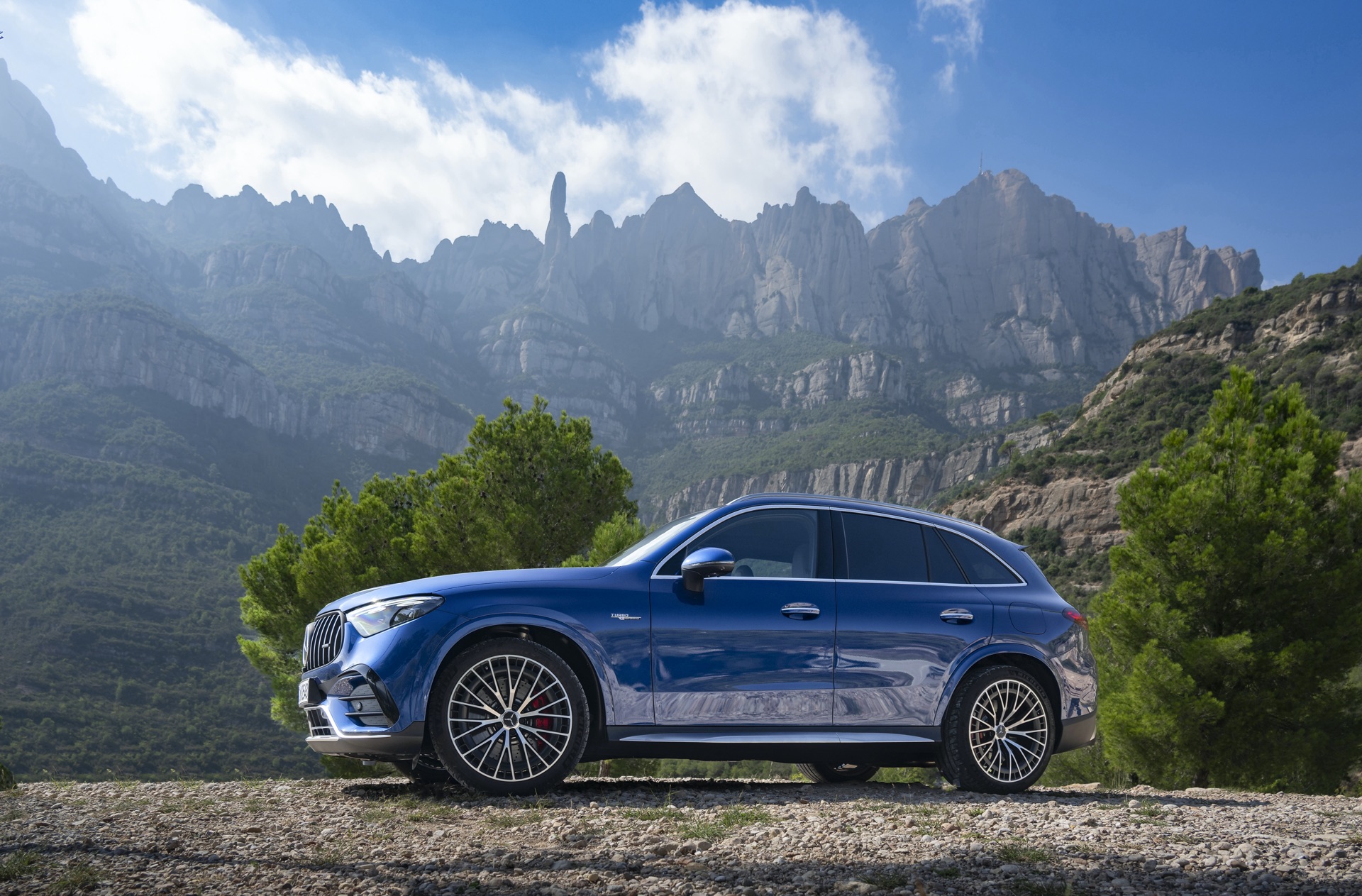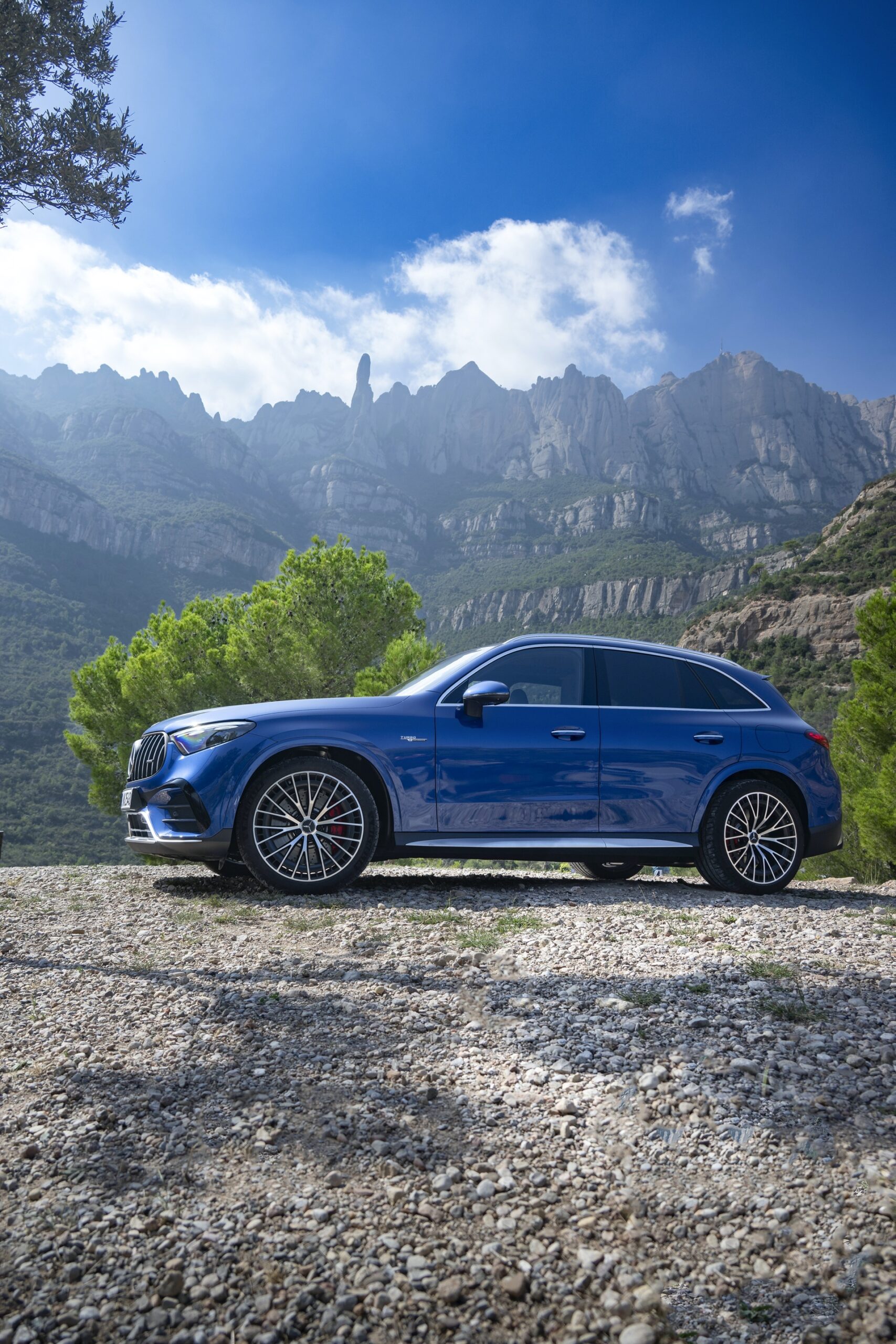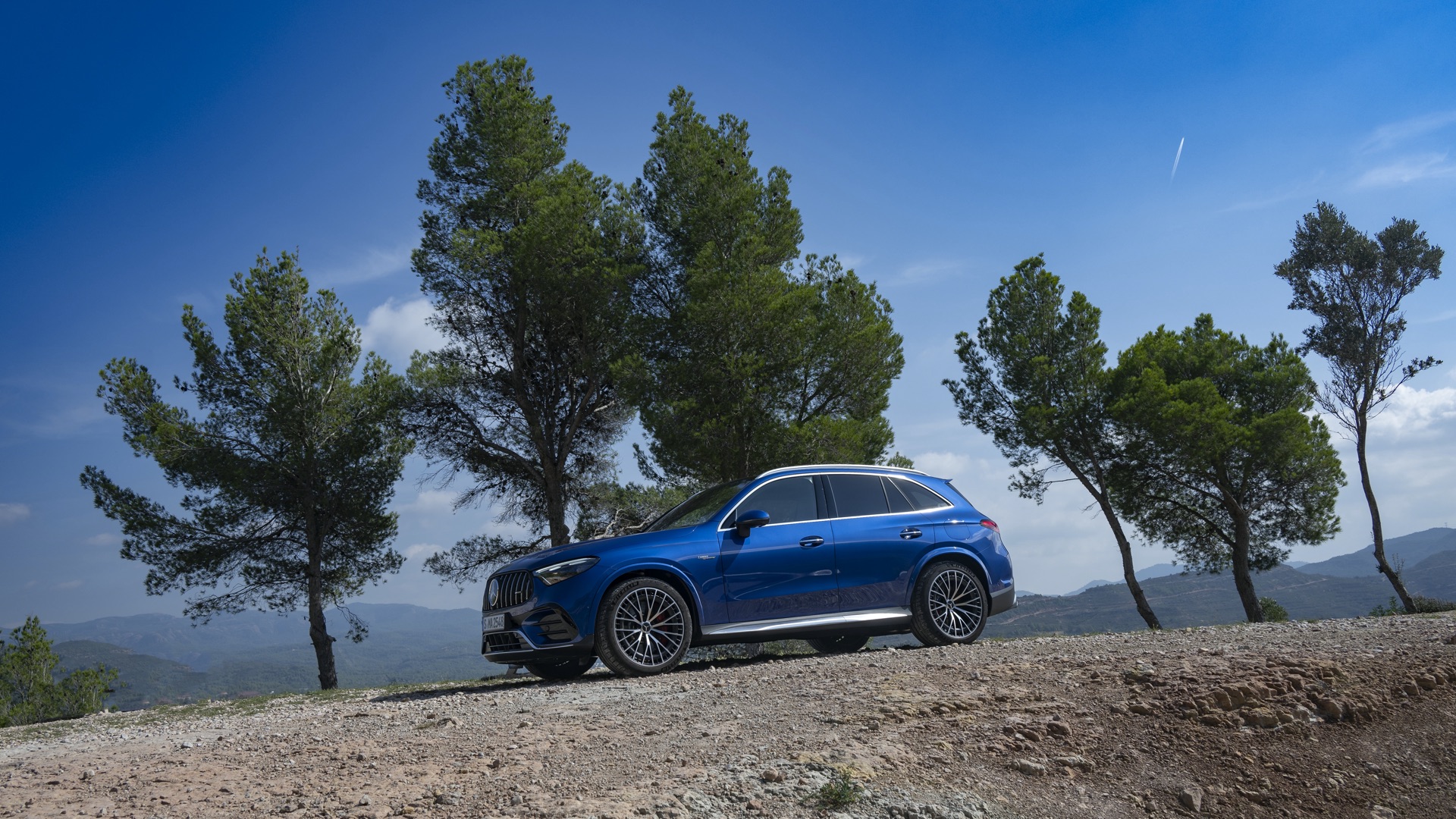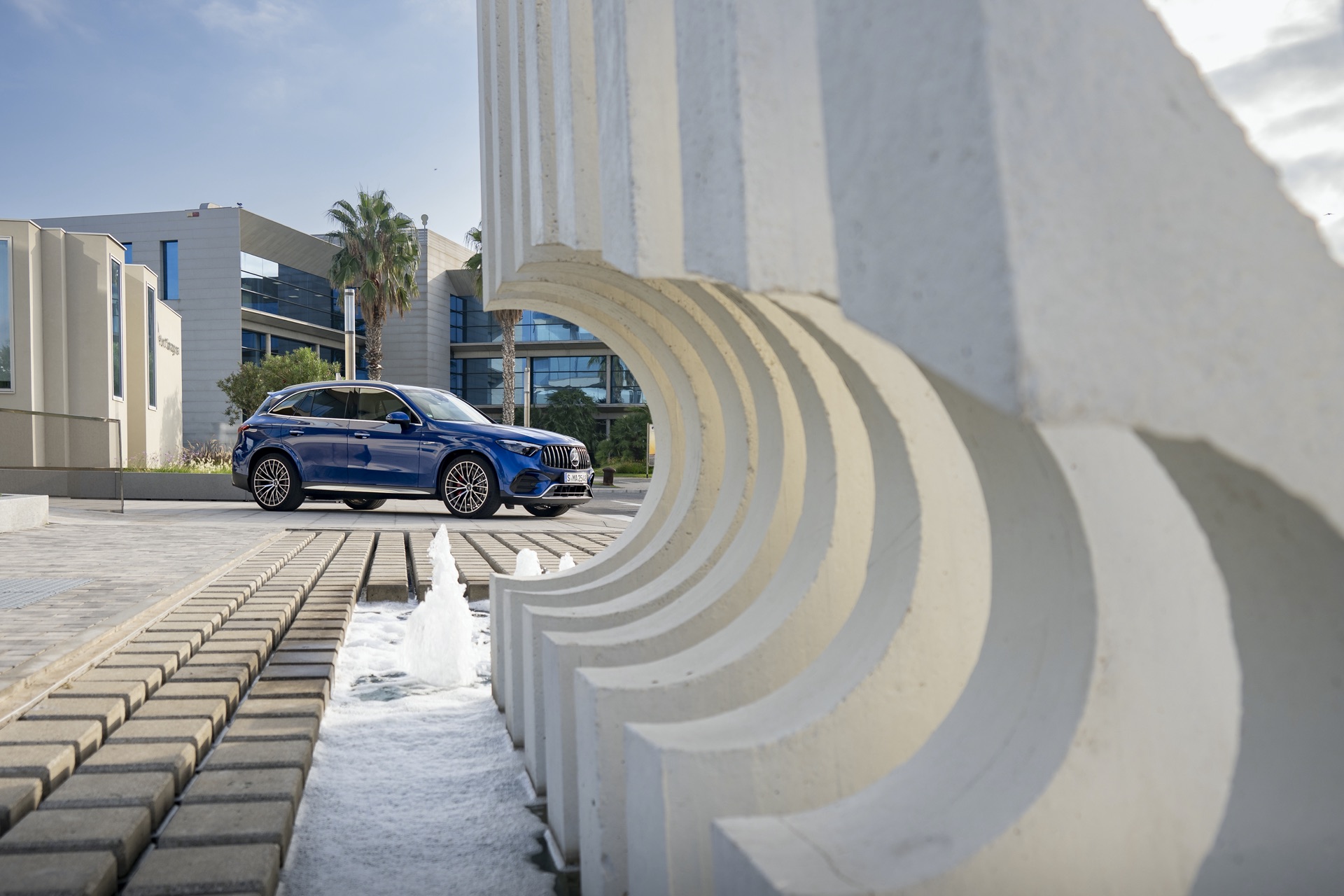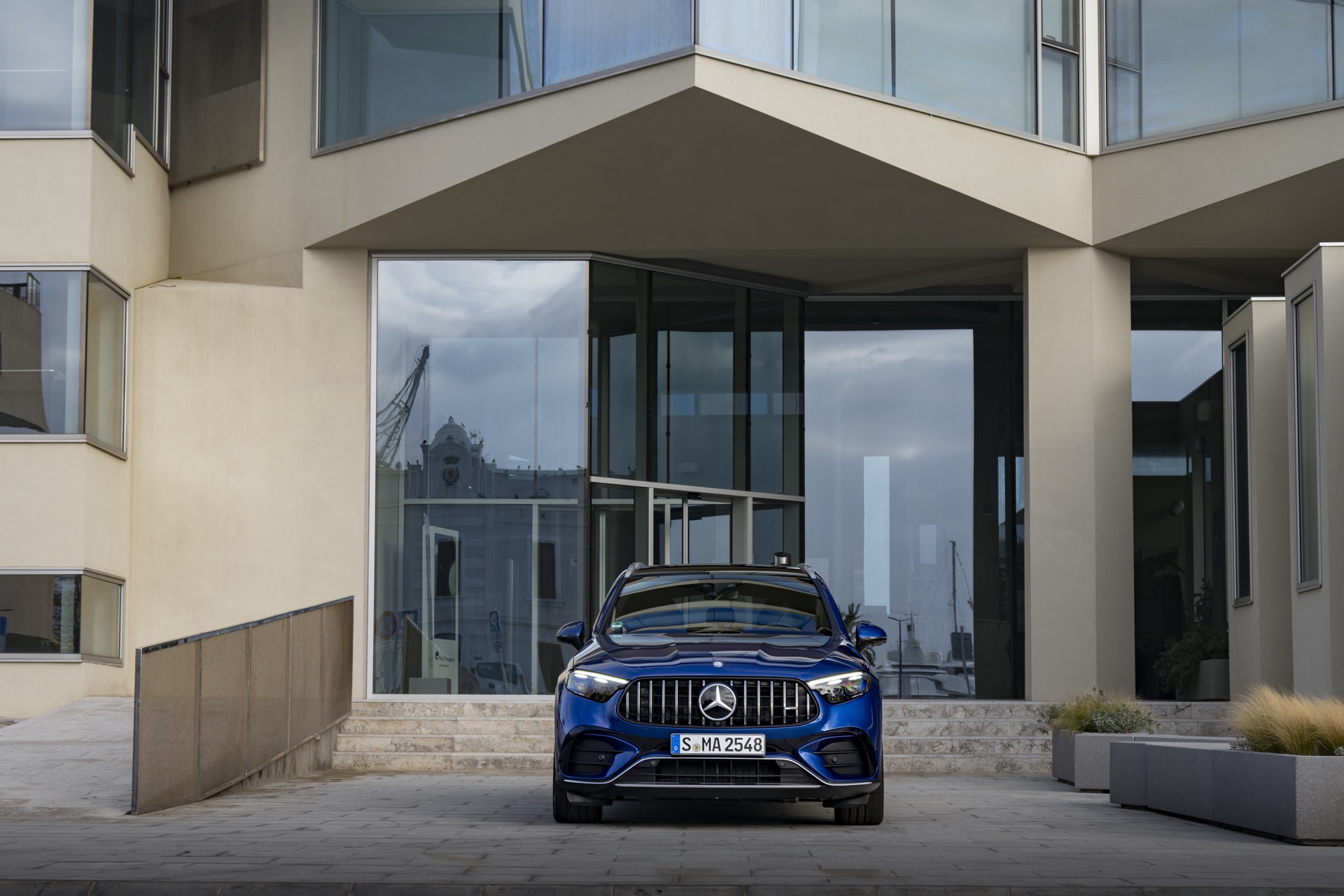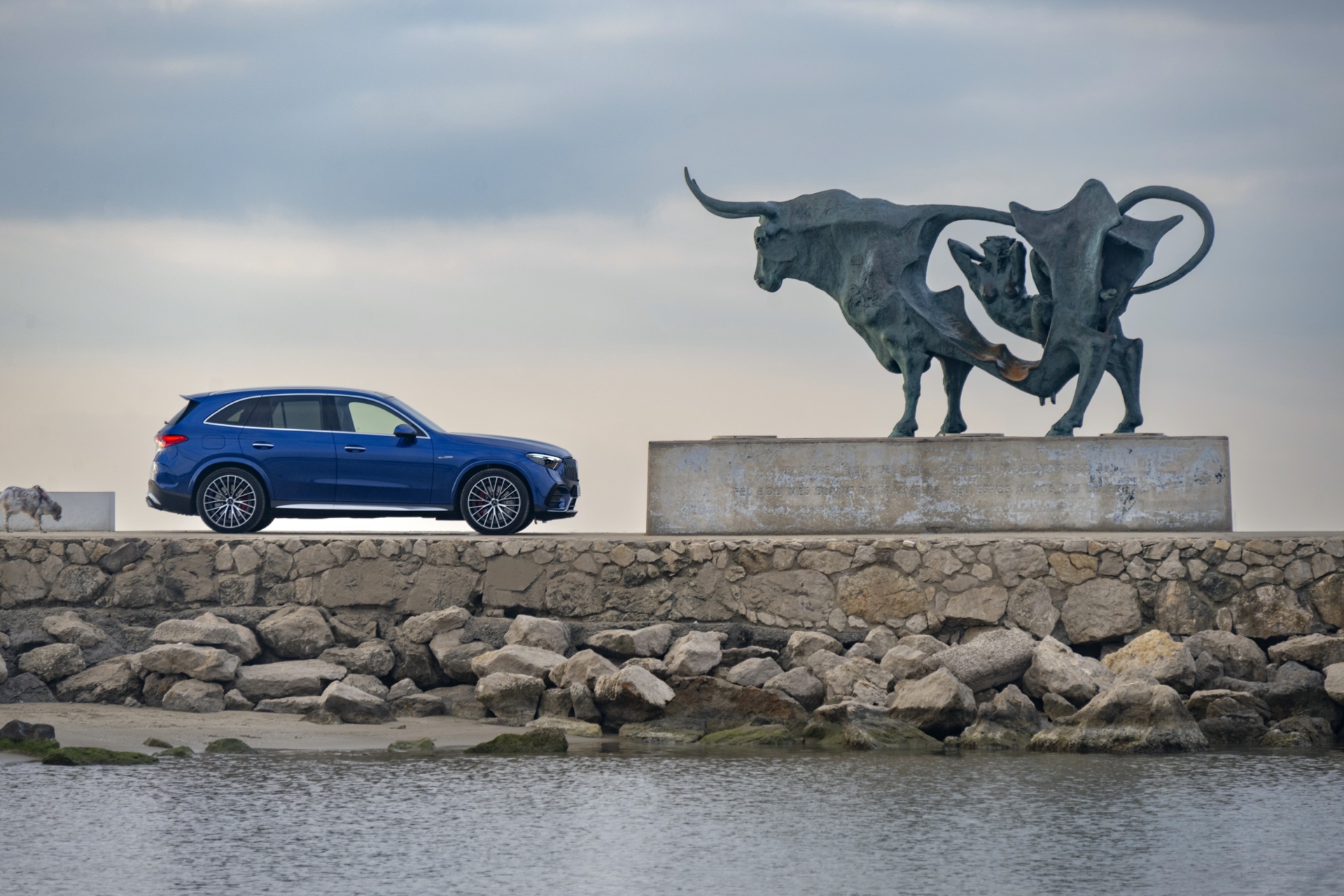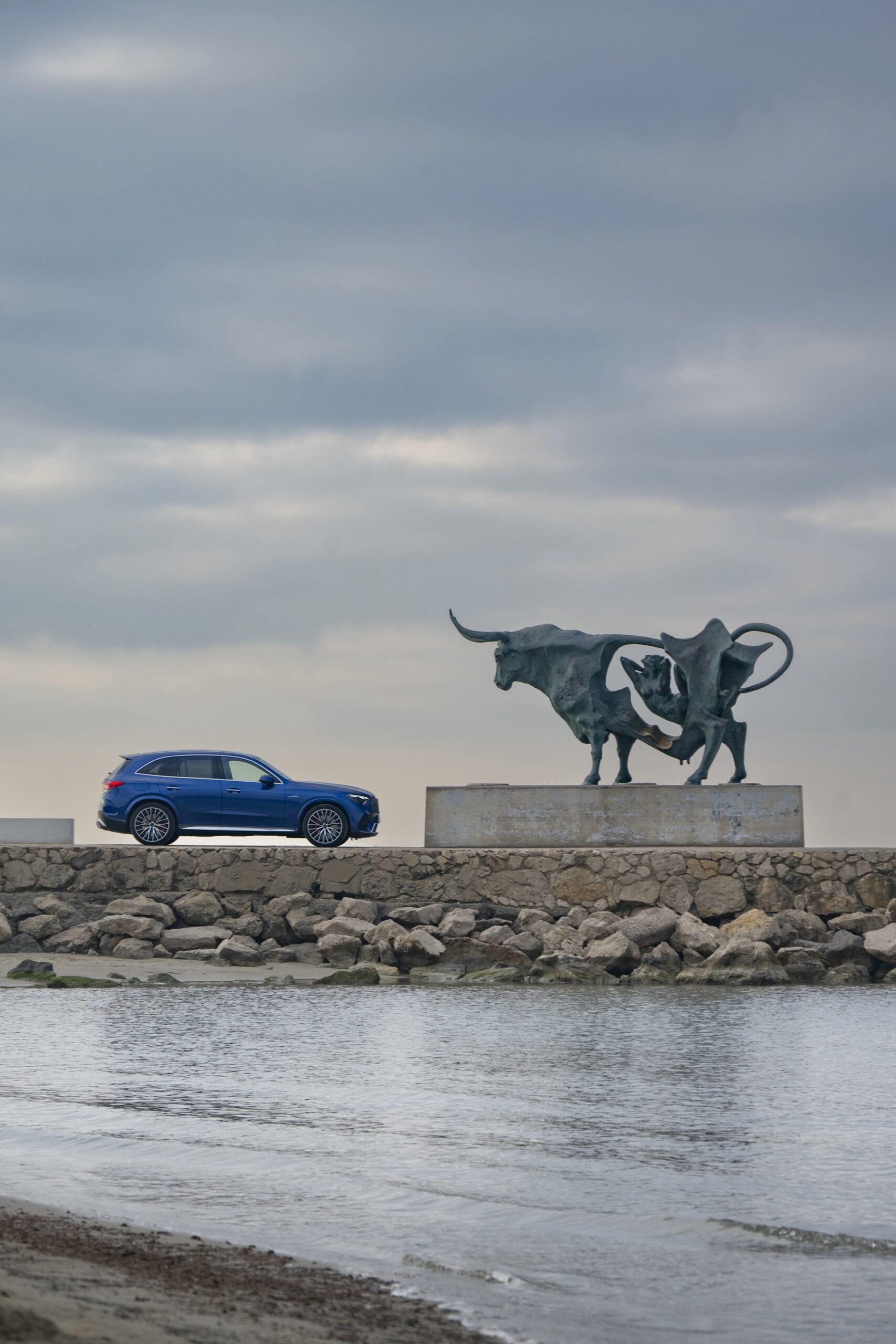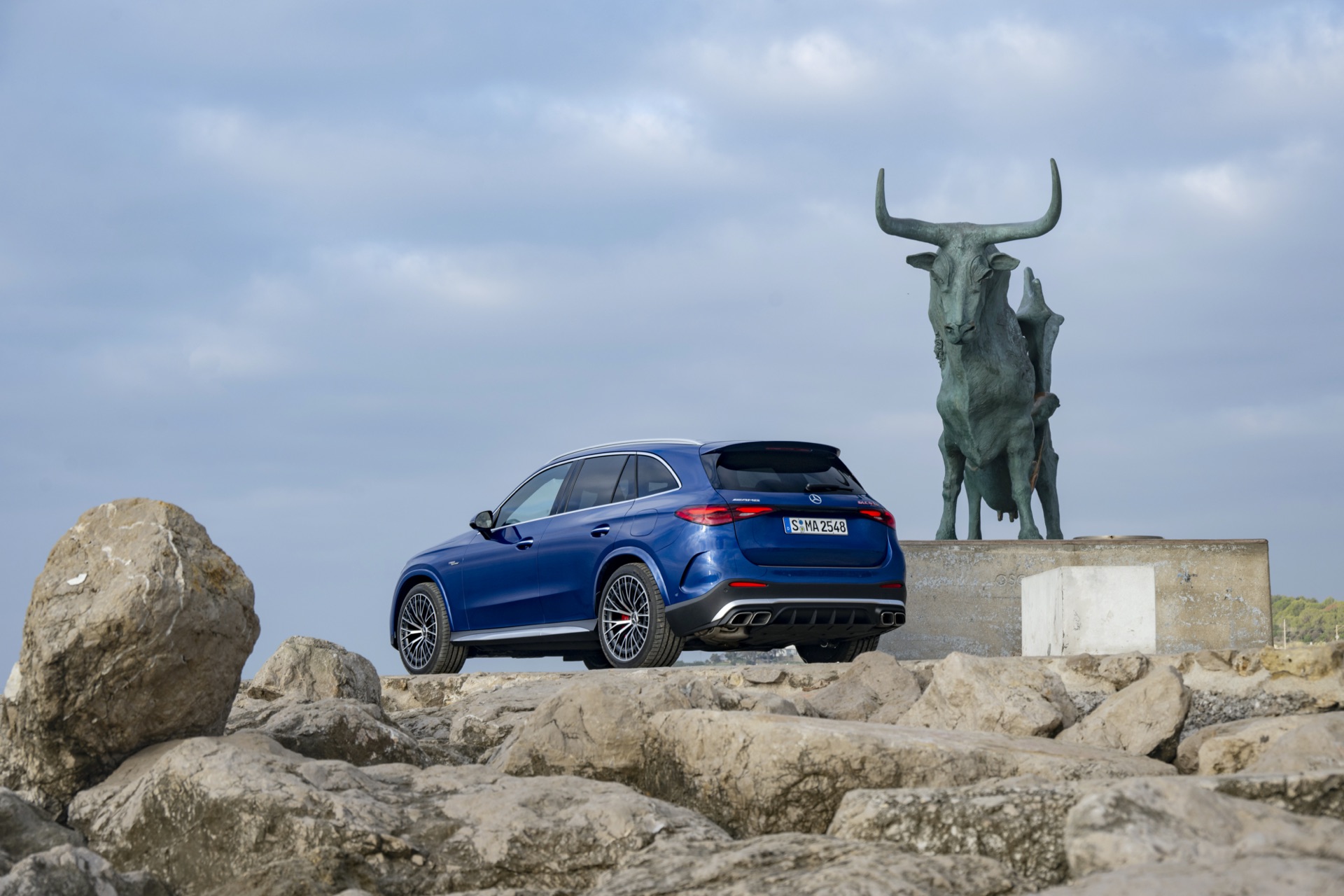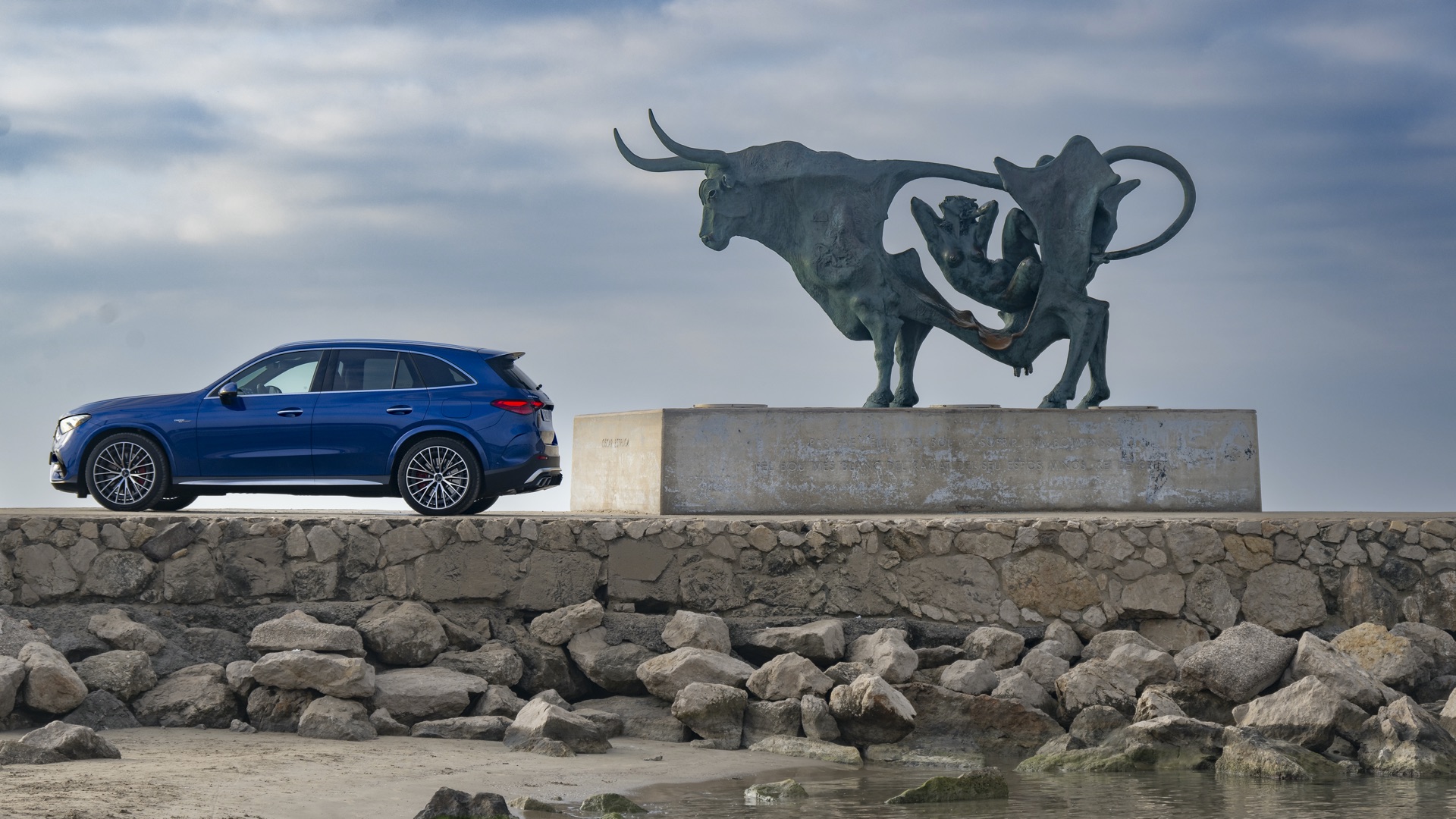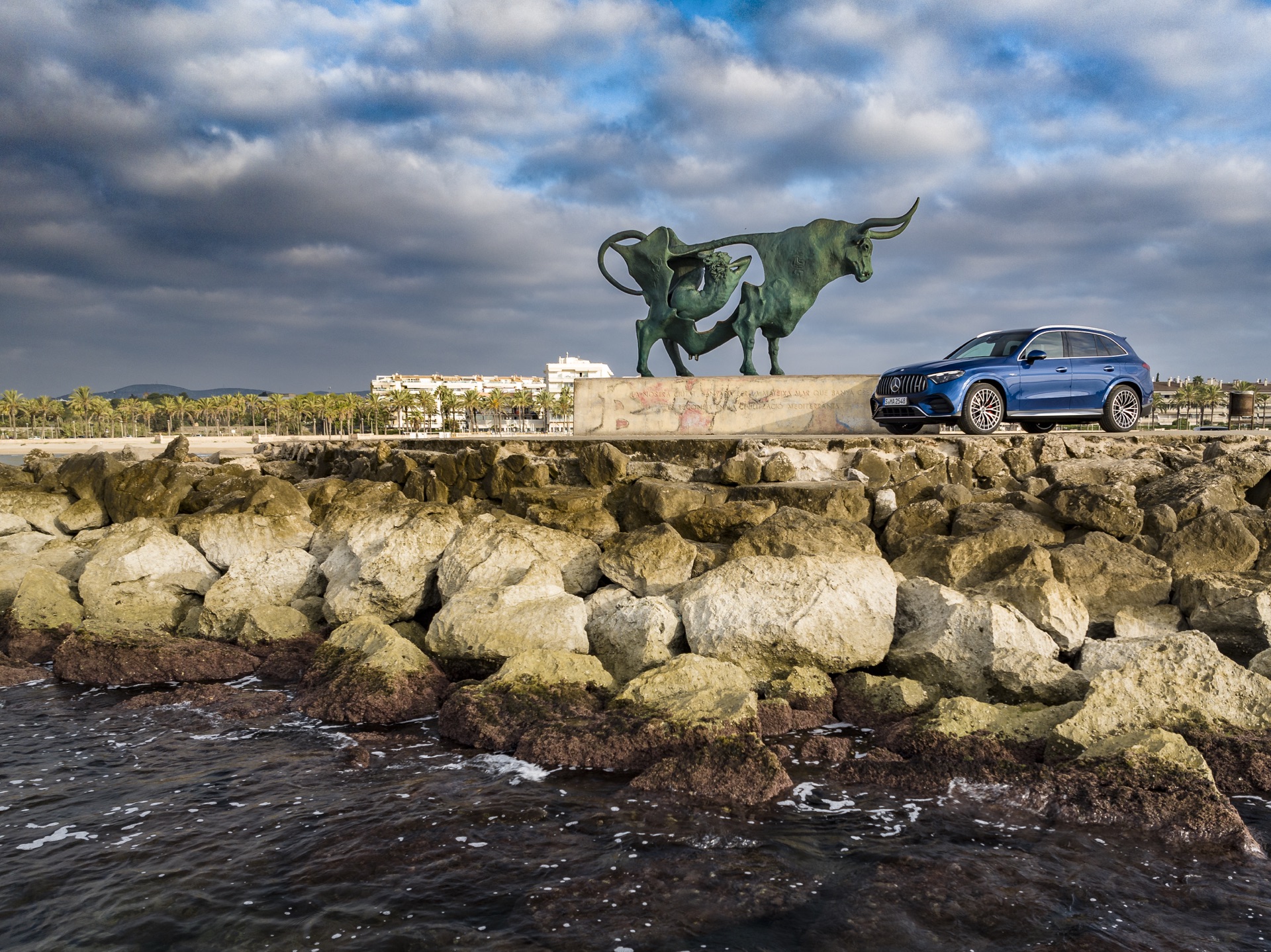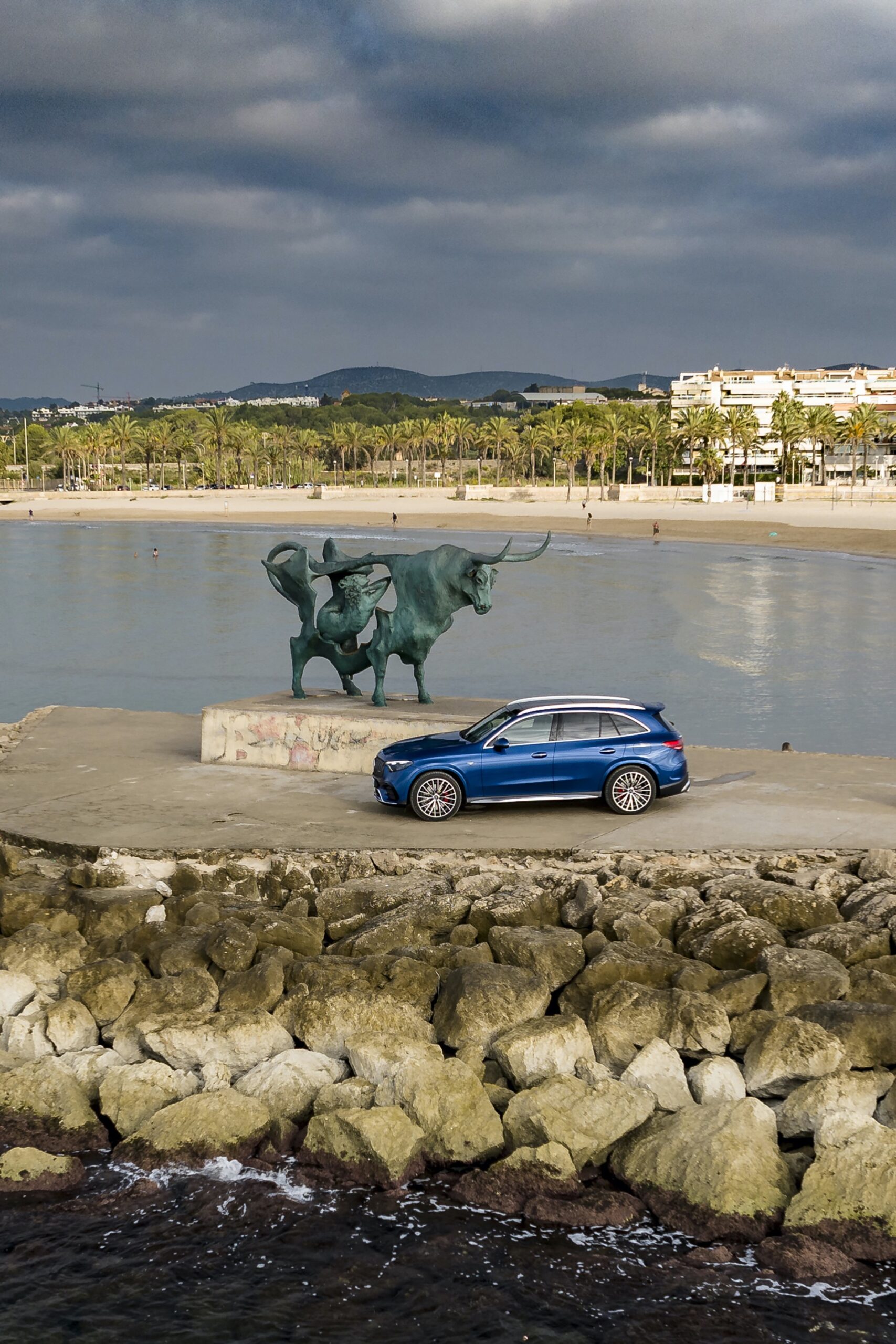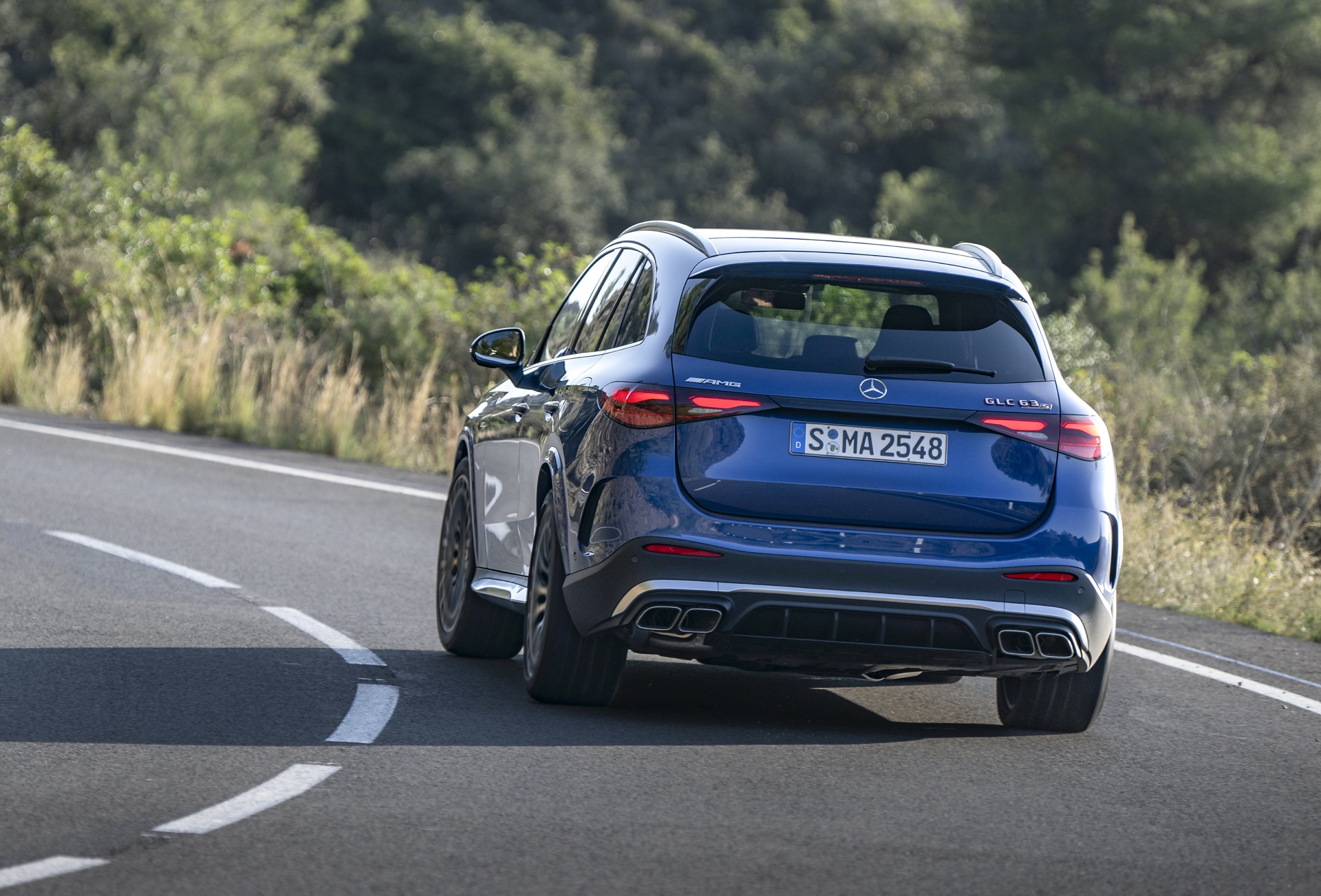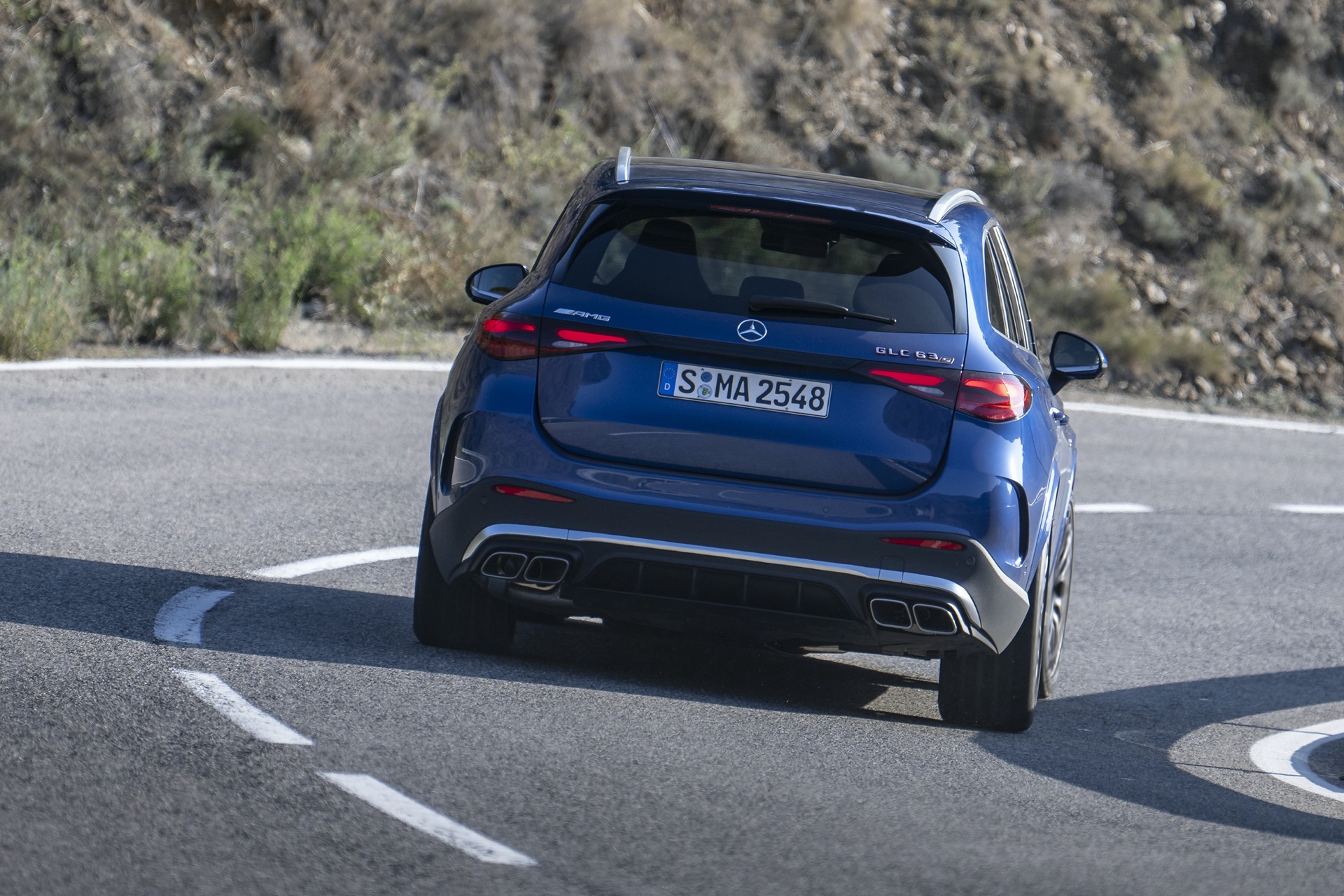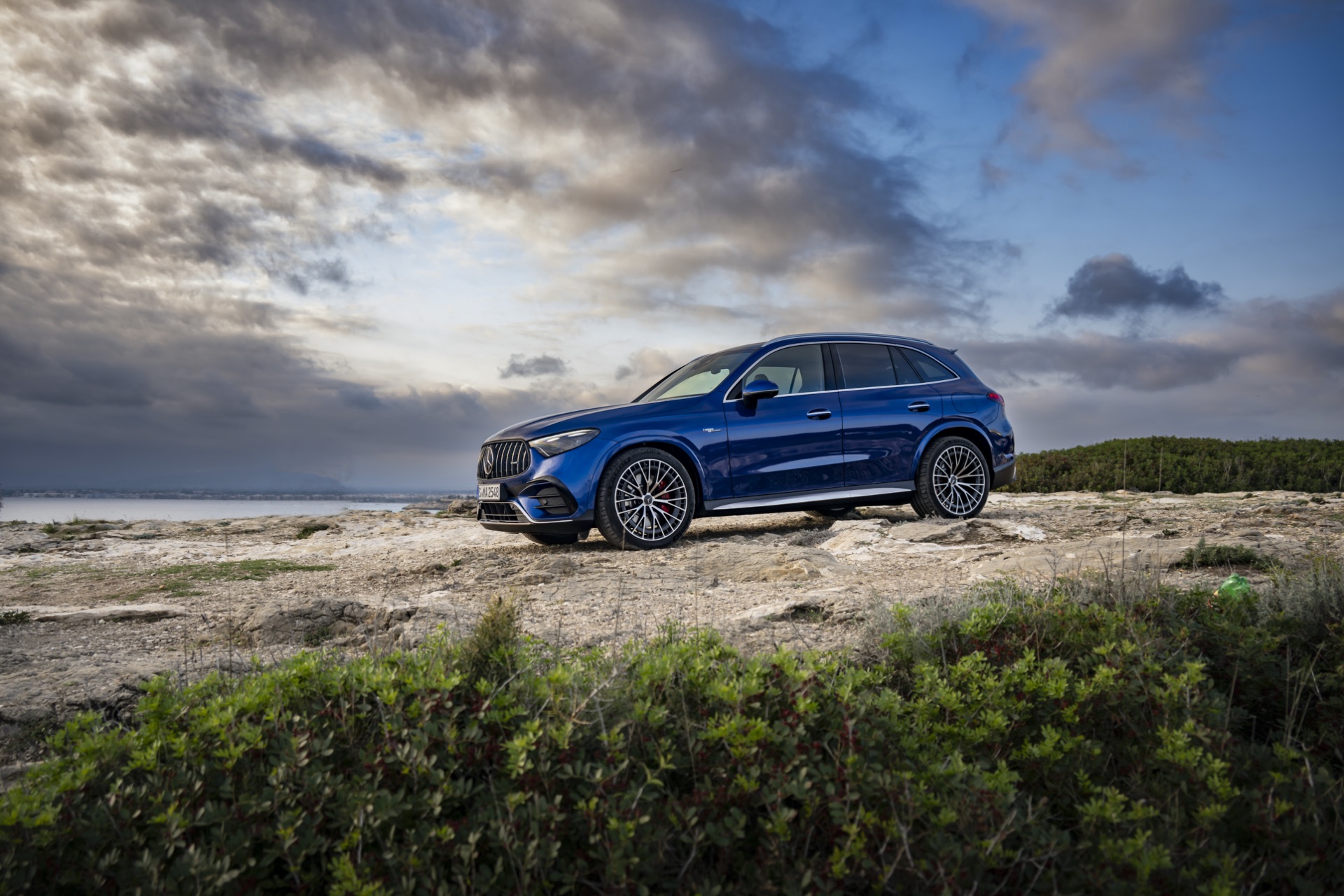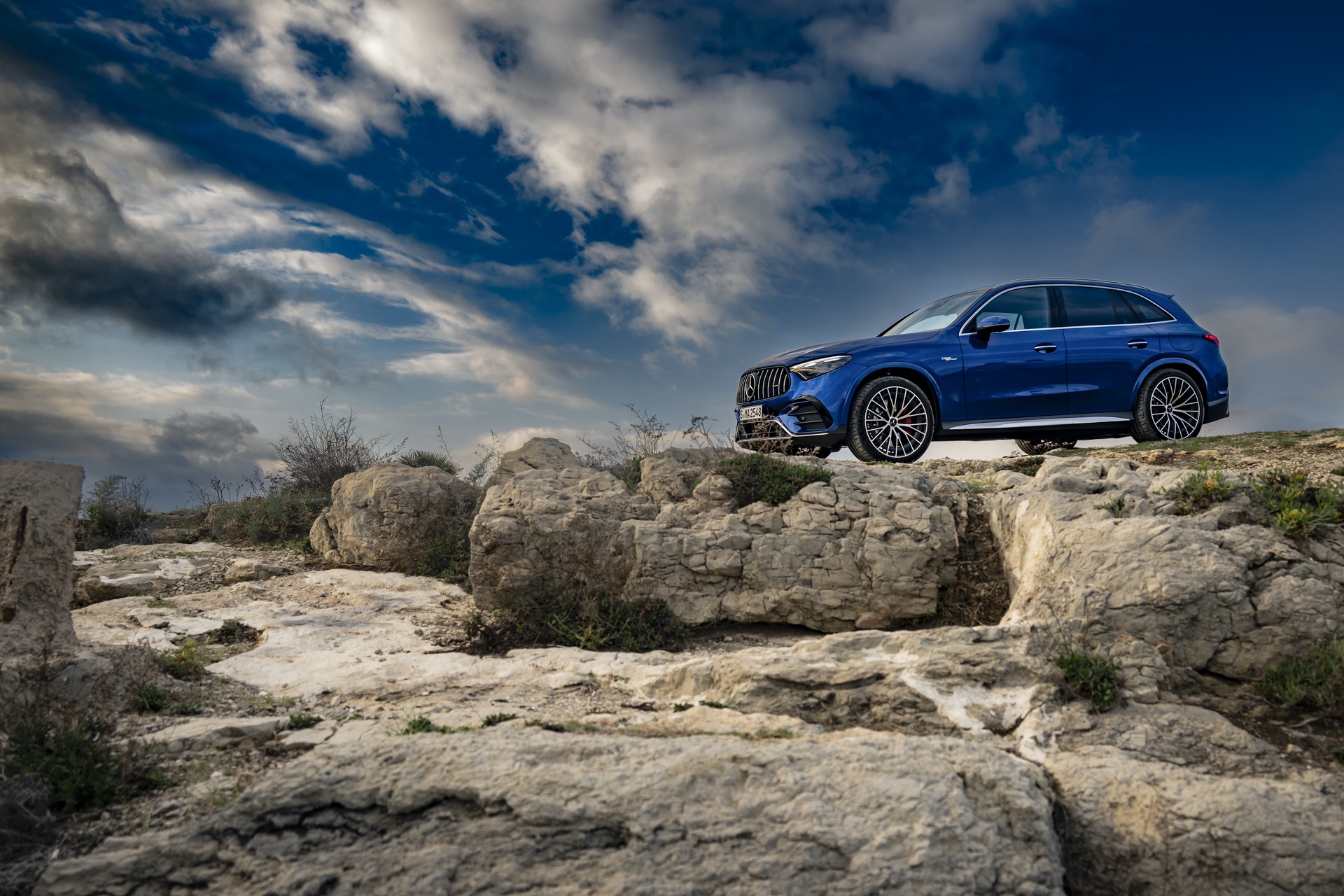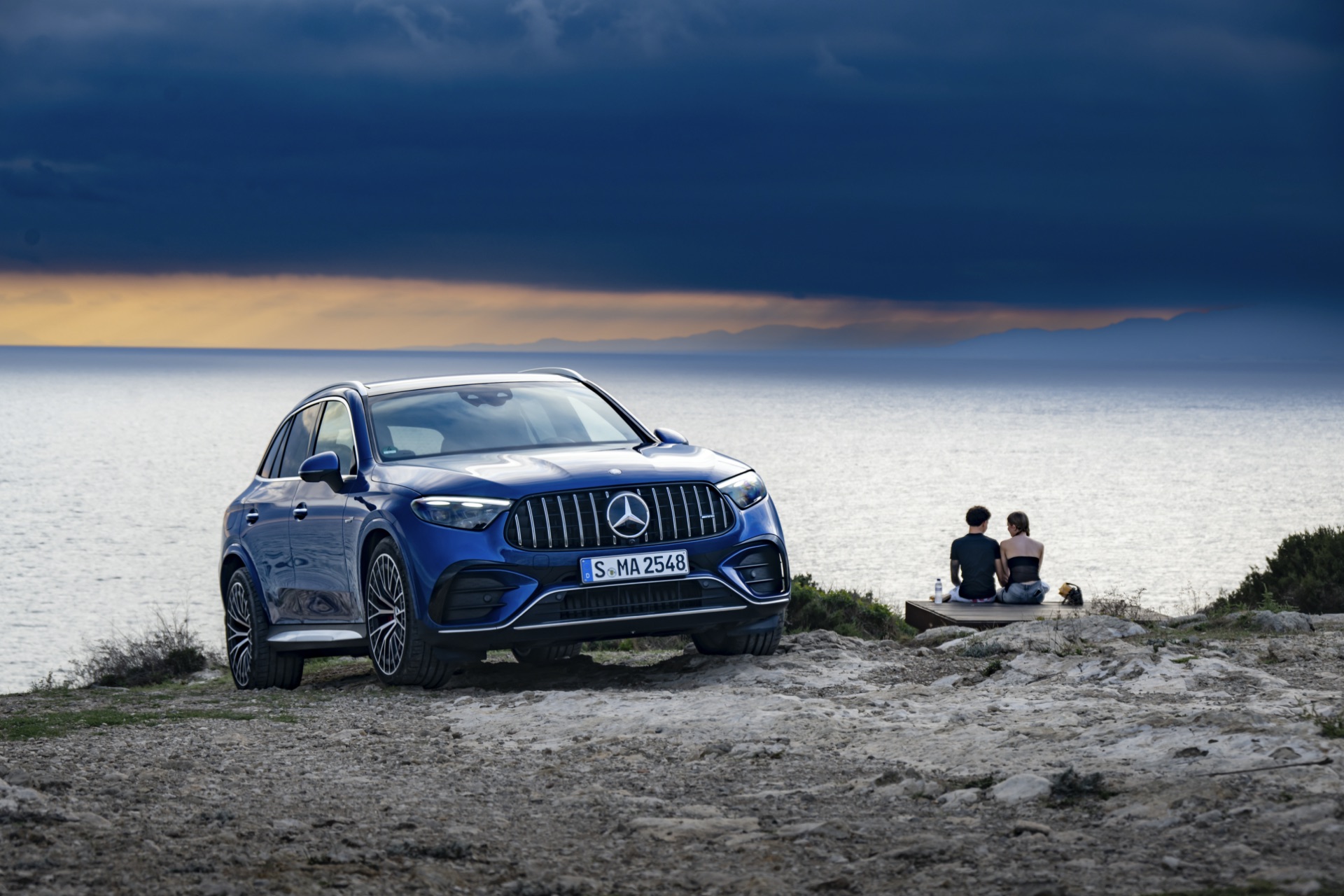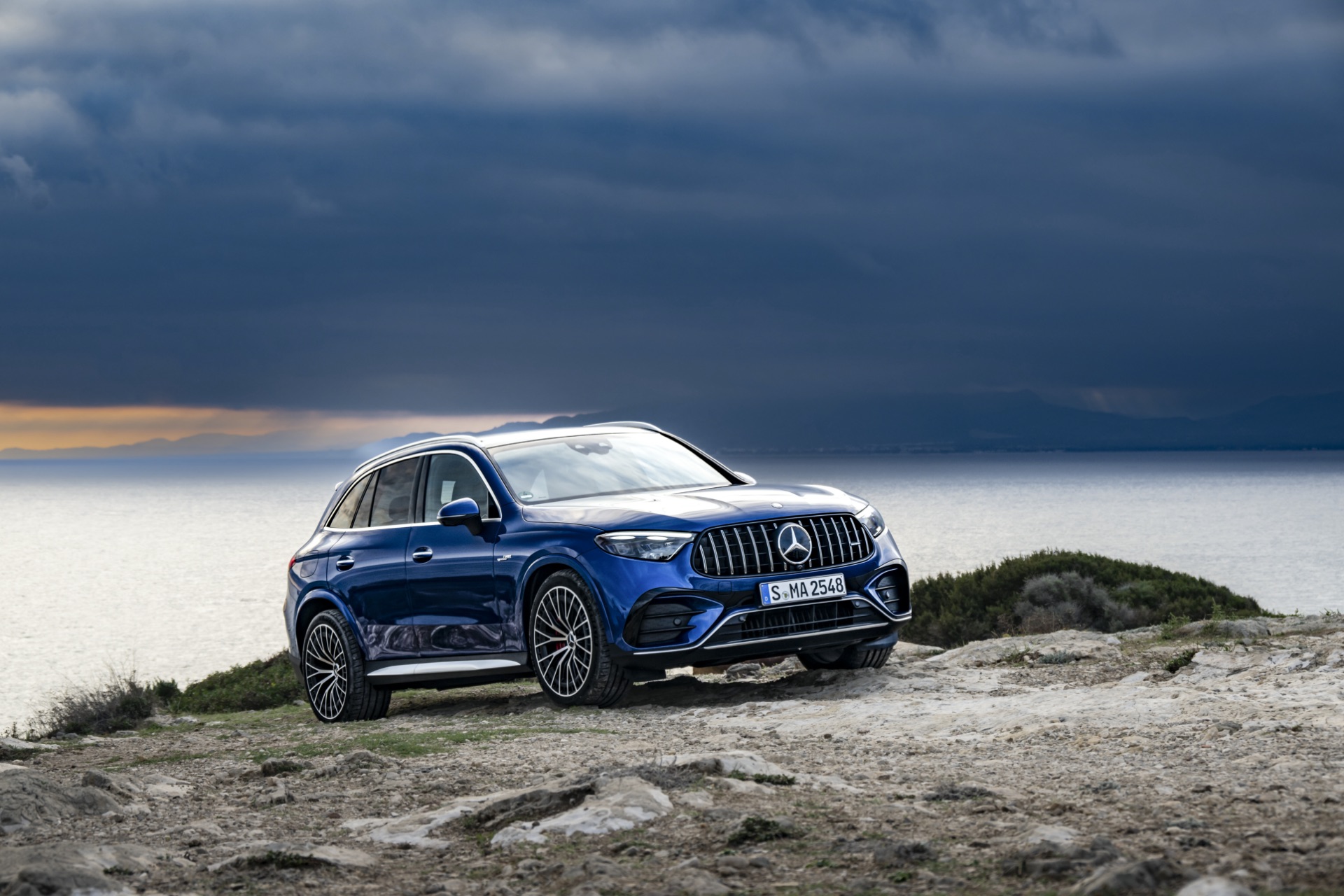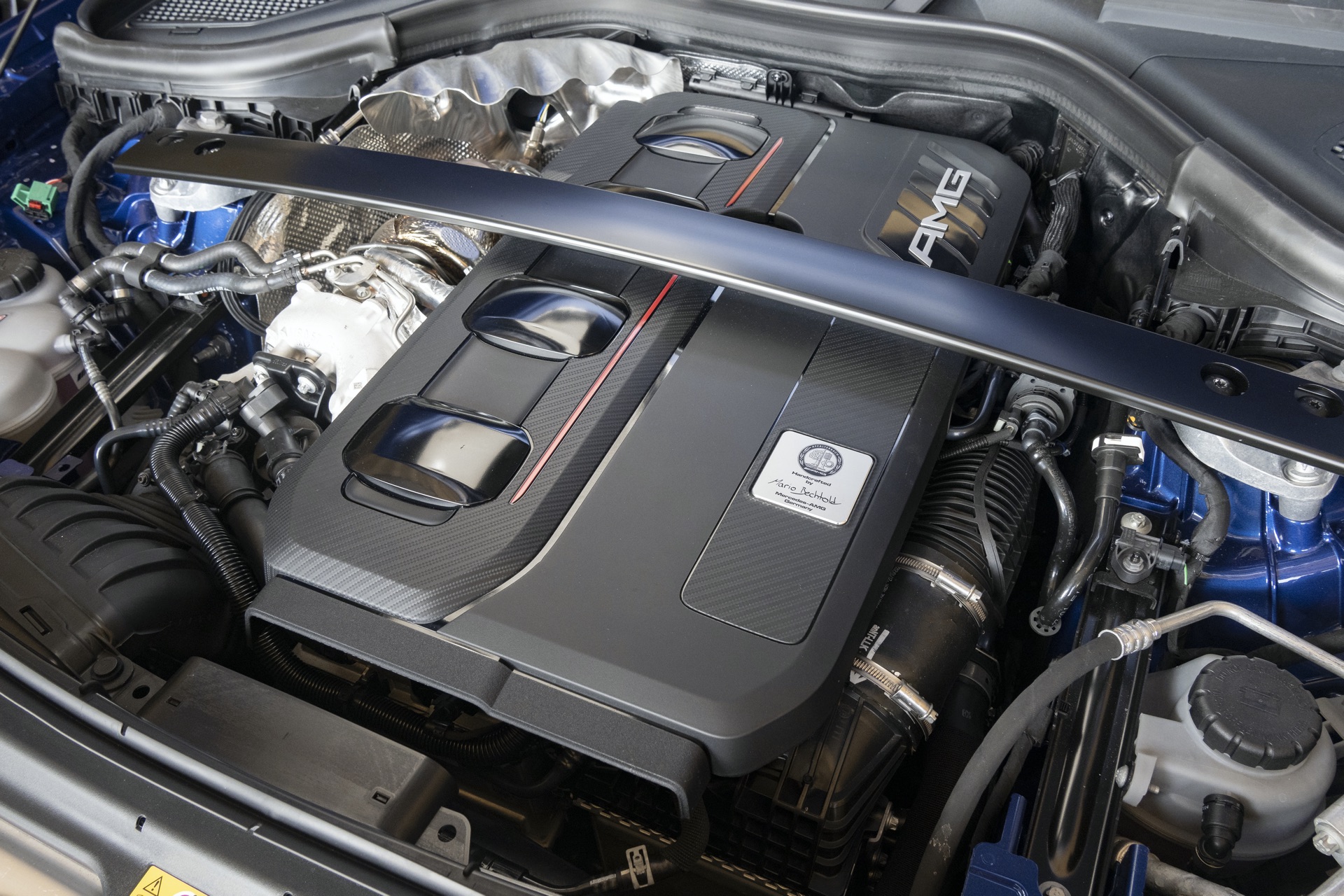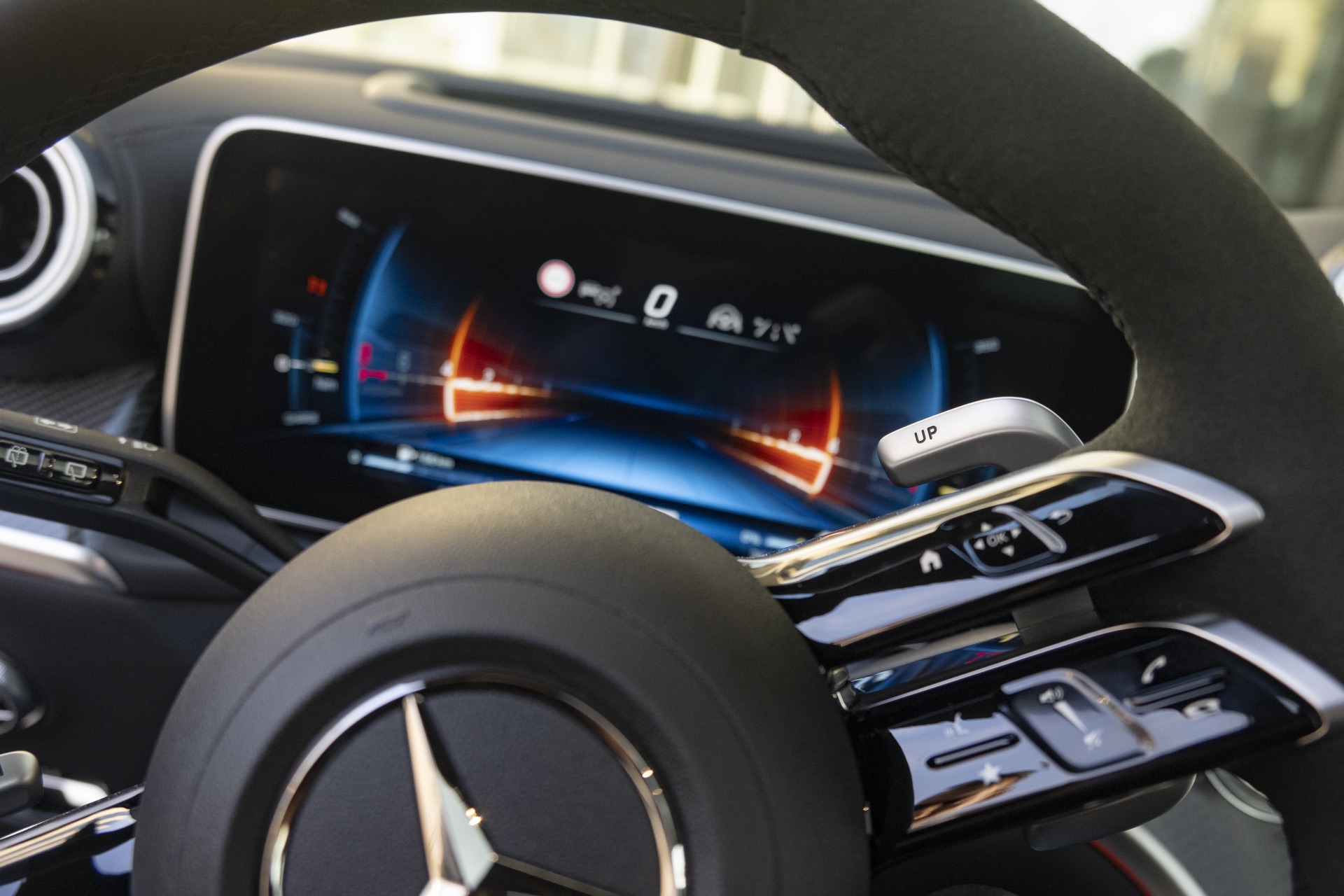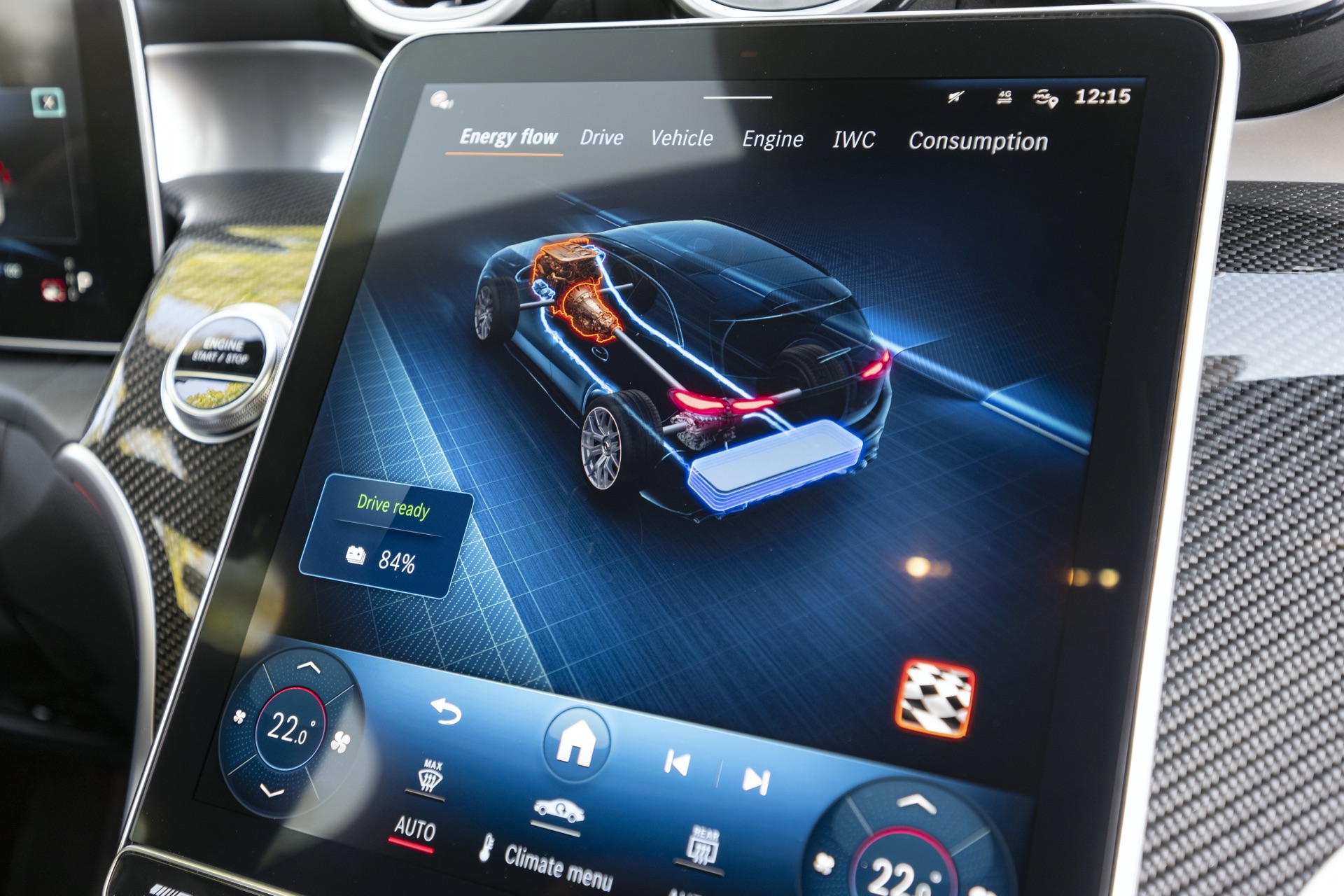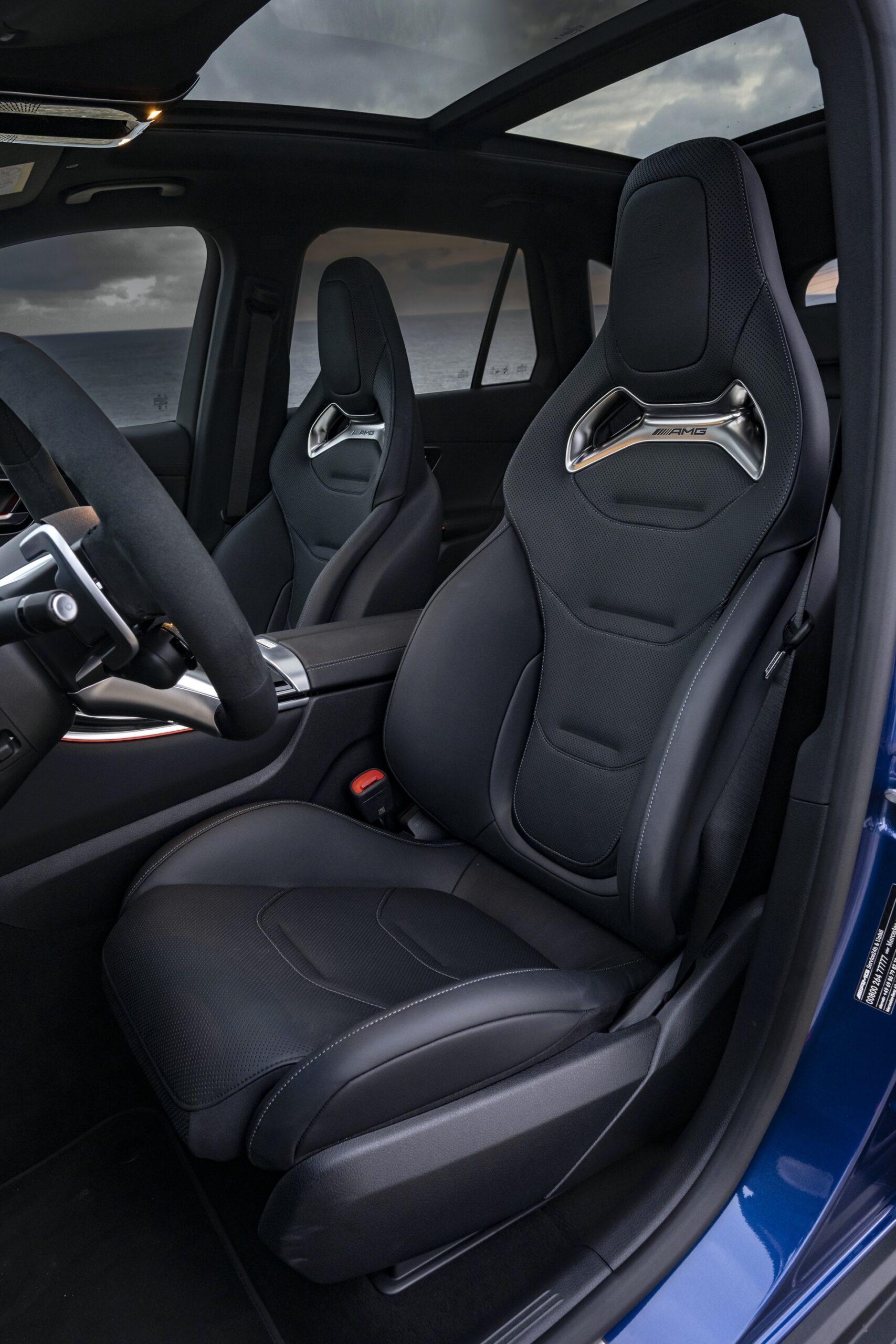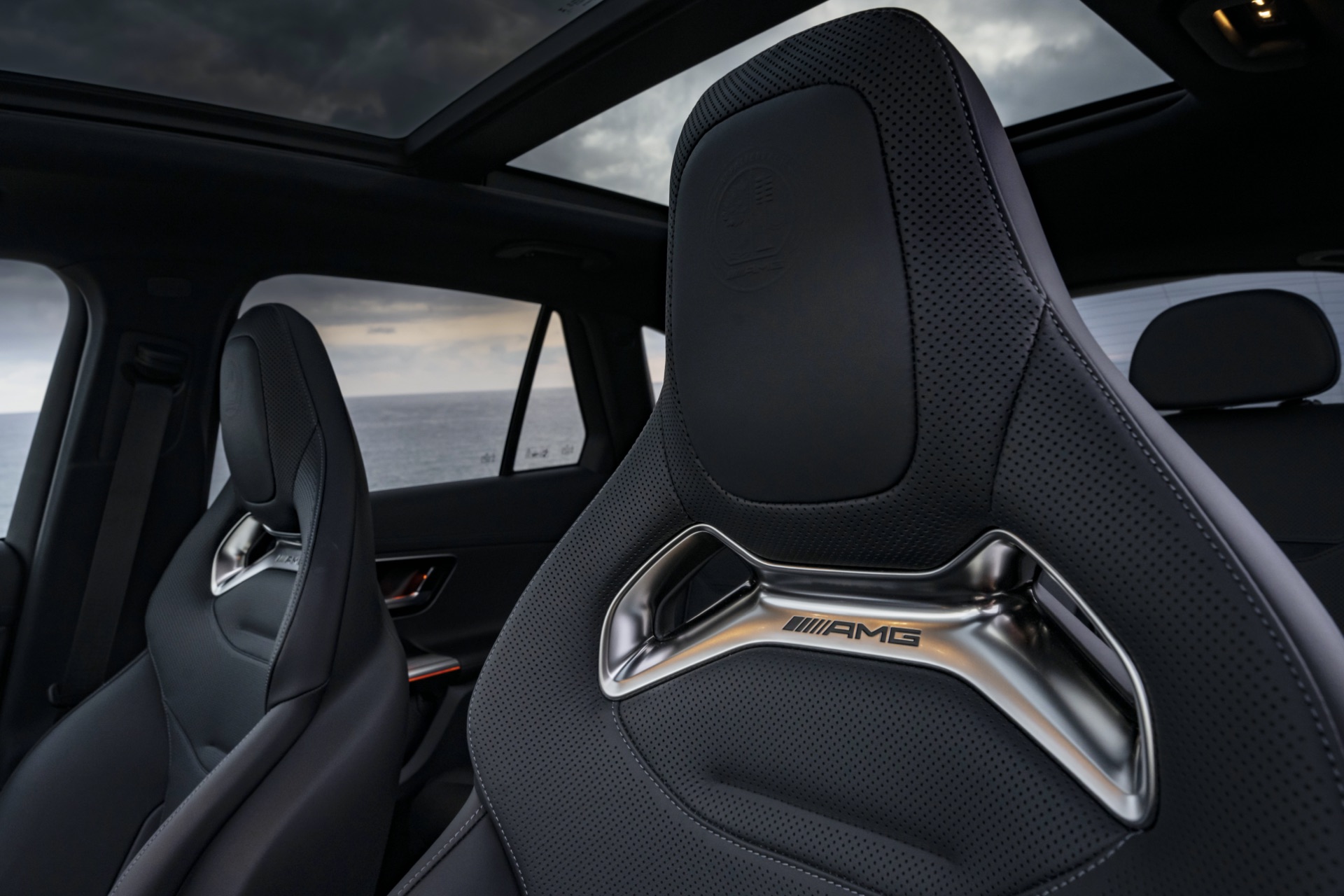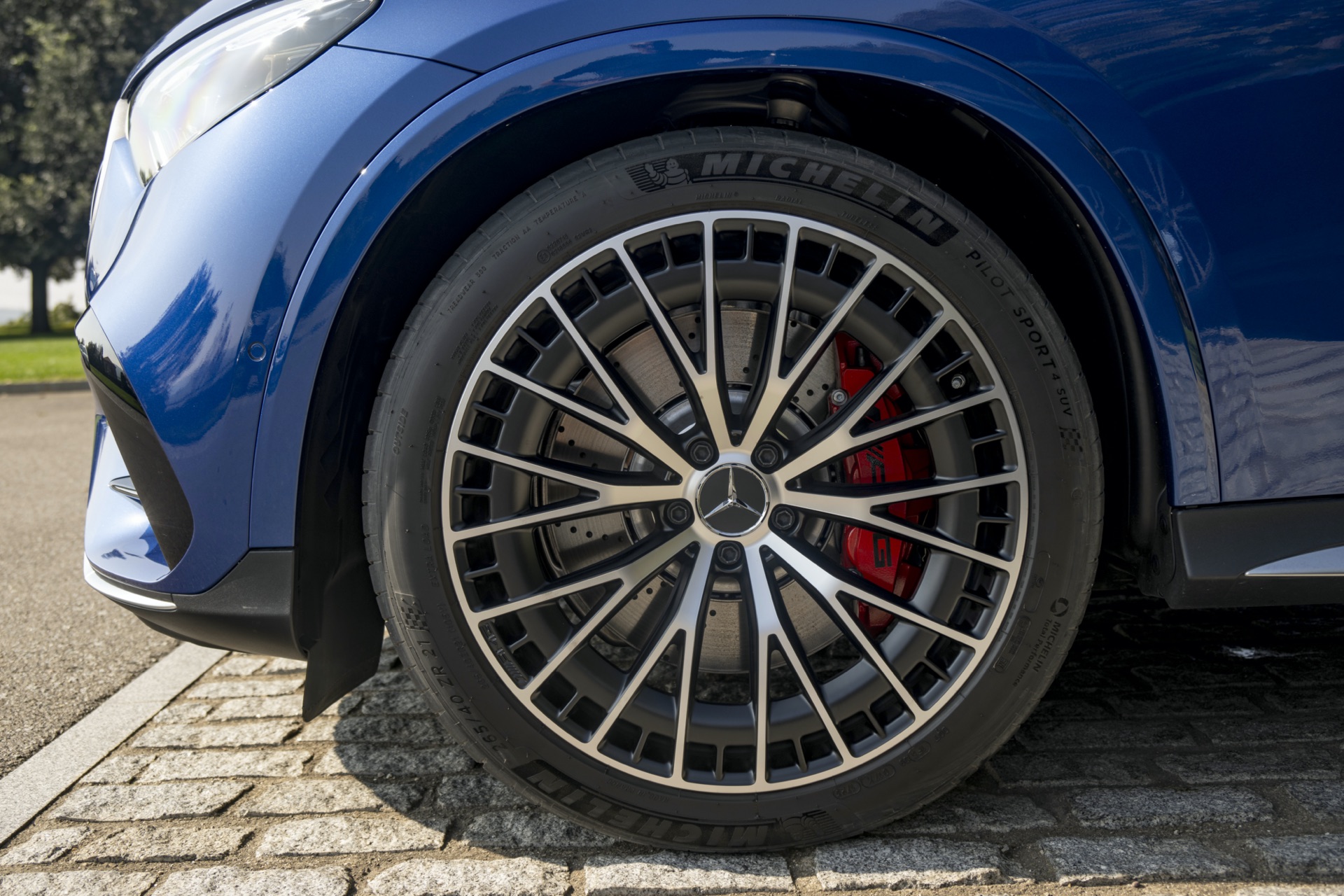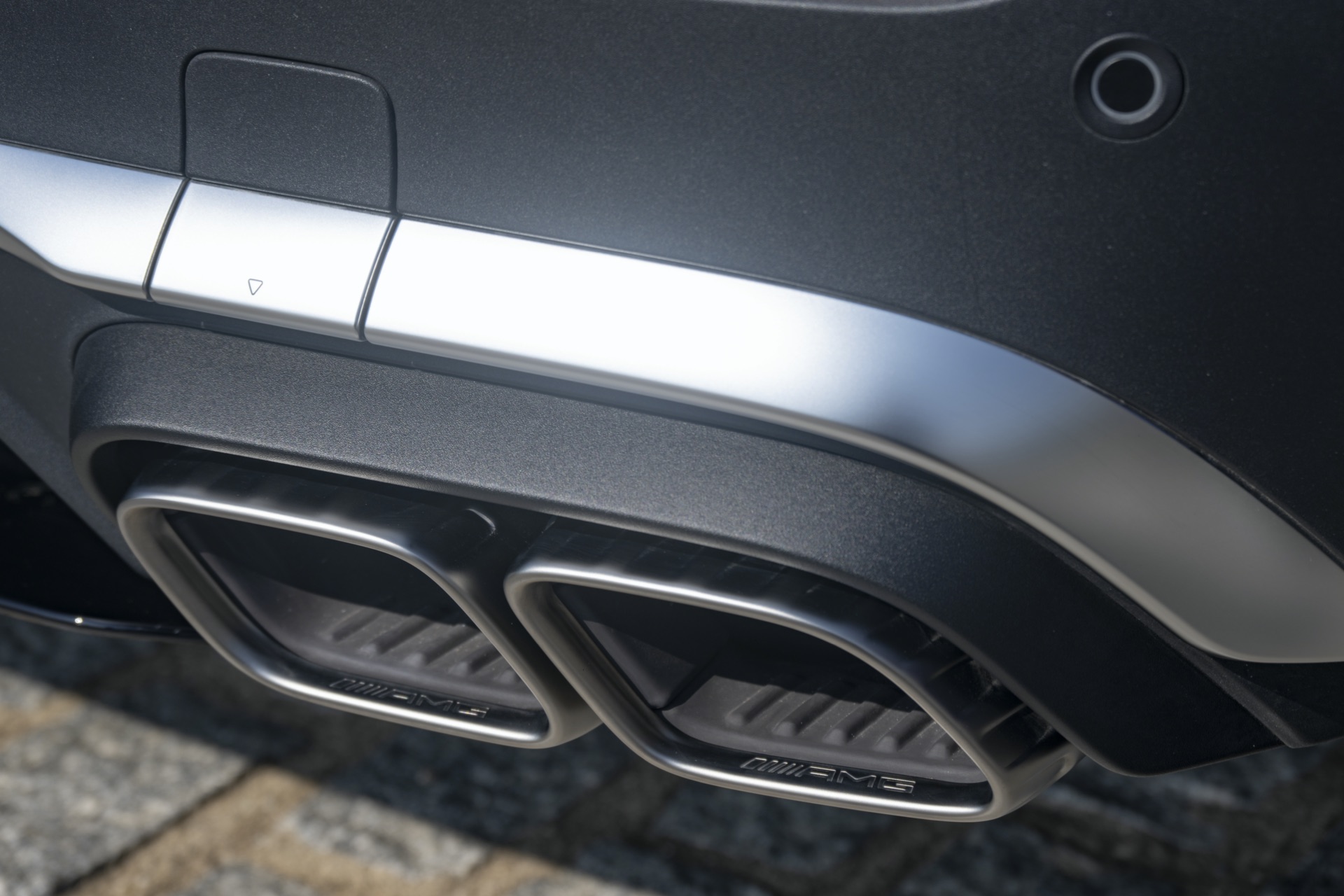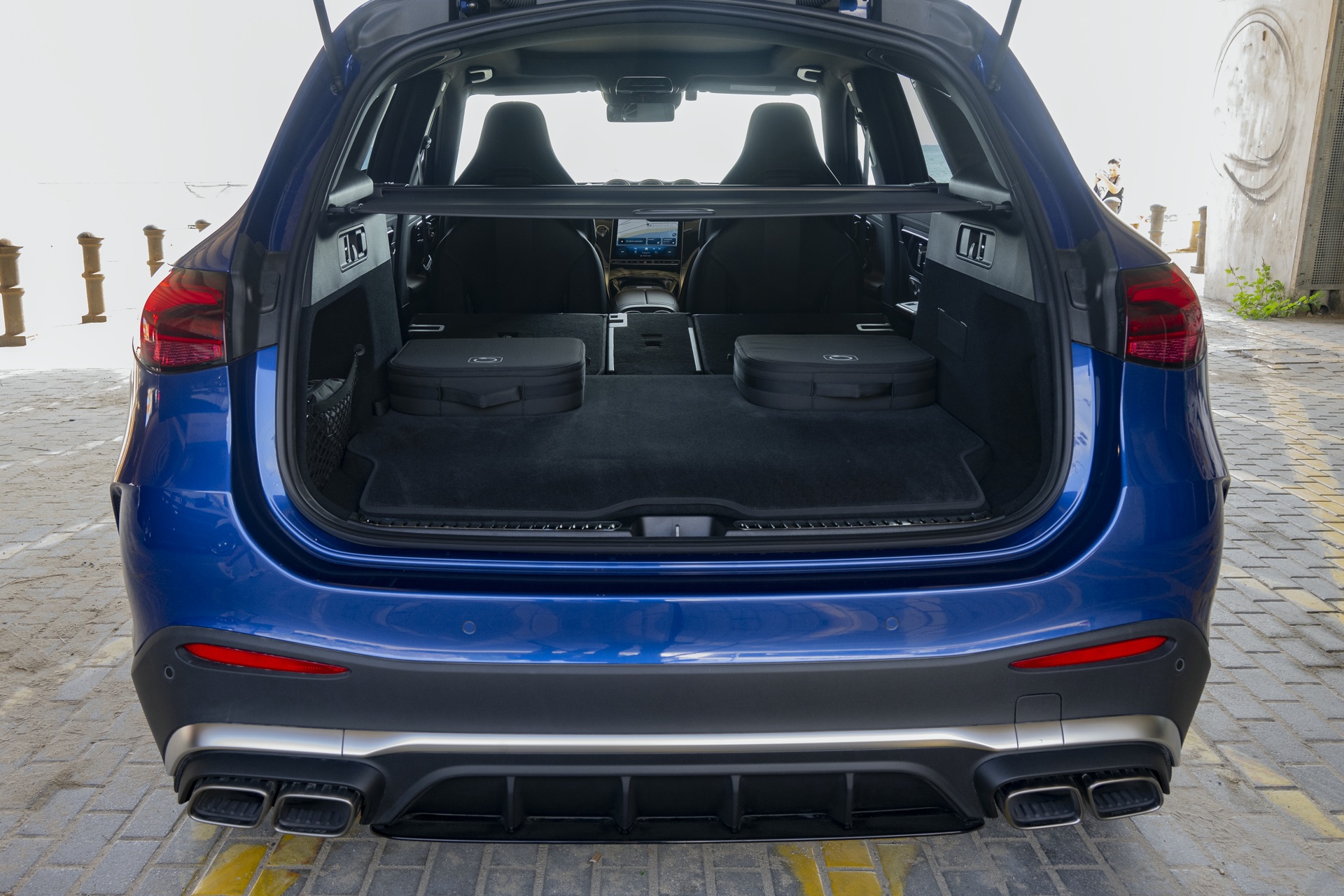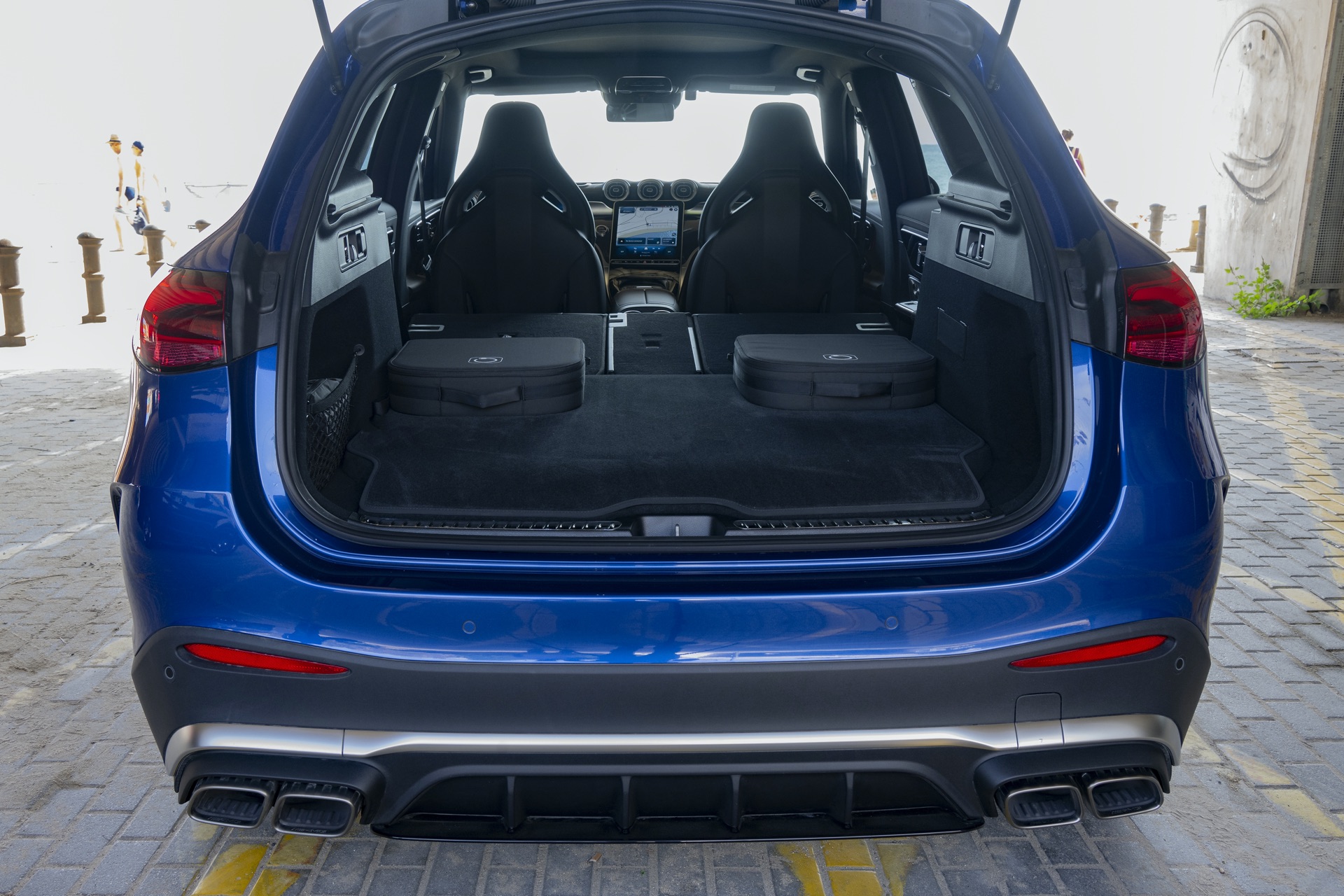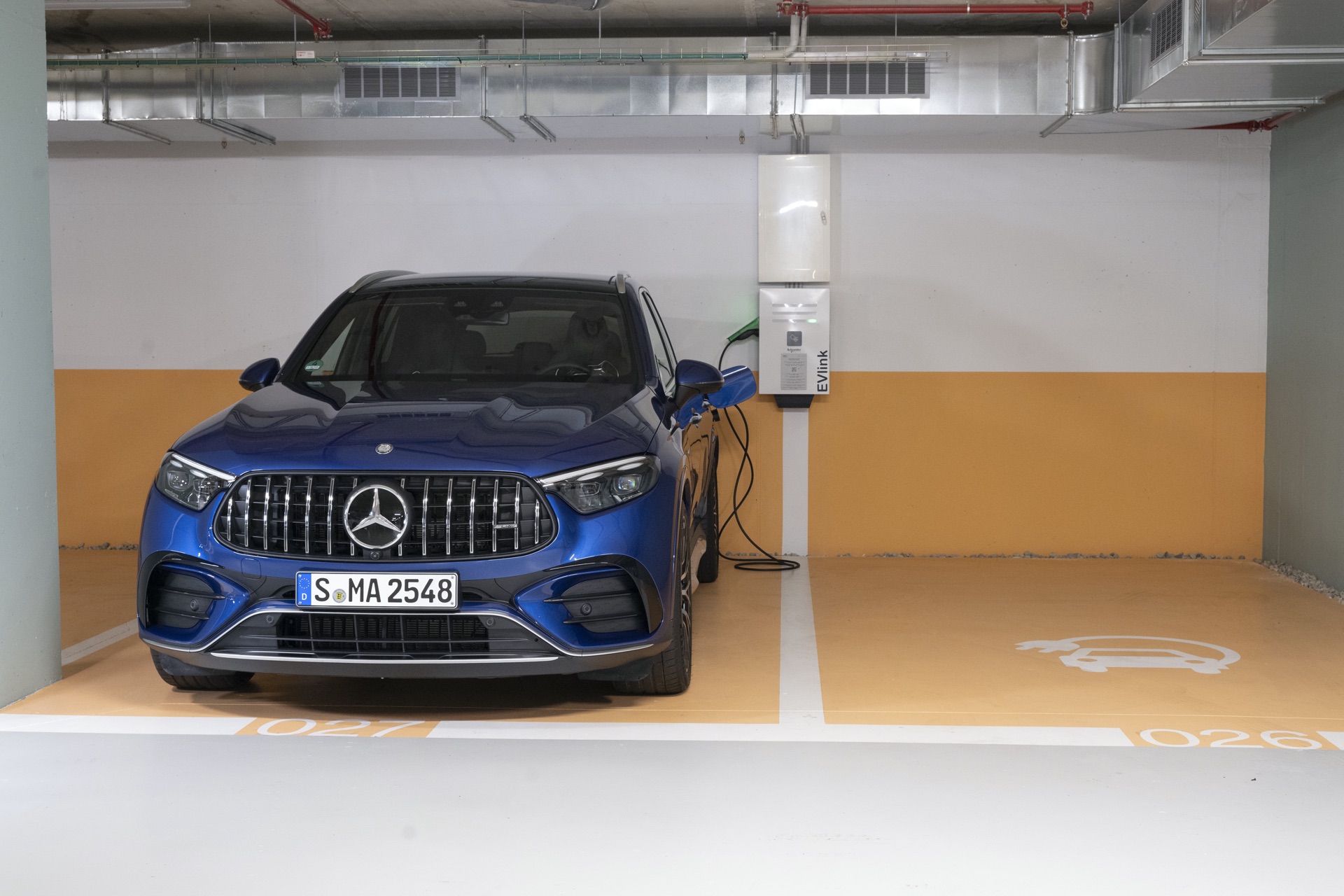Until recently, a brute force was lurking under the front hood of the AMG-treated Mercedes-Benz GLC, a 4.0-litre V8 turbo engine that hurled the SUV forward with a thunderous roar. Mostly due to the politically forced electrification in Europe, the AMG GLC 63 has now undergone a significant transformation: engine displacement and cylinder count have been halved – while the weight has increased significantly due to a battery sitting beneath the trunk, powering an electric motor.
AMG has certainly opted for the most radical solution, while the competition remains considerably more conservative. For example, BMW sticks with the inline-six-cylinder in the X3 M and X4 M models. Has Affalterbach made the right choice?
The raw performance figures, at least, seem to suggest so. With an astonishing 680 PS and up to 1020 Newton meters of torque, the GLC confidently takes the lead in its segment. It jumps from 0 to 100 km/h in just 3.5 seconds, its top speed is limited to a generous 275 km/h. Even more astonishing, it’s claimed to consume only 7.5 litres per 100 kilometres in the European “weighted and combined” cycle. However, this claim needs to be put into perspective. During a spirited drive on Spanish country roads, not at autobahn speeds, we recorded an average consumption of nearly 16 litres per 100 kilometres.
This means the new four-cylinder hybrid differs only slightly from the fuel consumption of the previous eight-cylinder model. But the precious fuel is well invested because the GLC 63 S E-Performance is loads of fun to drive, despite its hefty curb weight of over 2.3 tons. Thanks to a sufficiently large battery, full acceleration is available at practically all times. Depending on the driving mode, the SUV eagerly surges forward, accompanied by an aggressive, sharp and artificially enhanced exhaust note that doesn’t attempt to imitate a six or eight-cylinder engine but manages to sound distinctively sporty in its own way. Quite similar to the A 45 AMG, actually.
The standard rear-axle steering enhances agility at lower speeds and stability at higher speeds – it works exceptionally well. The equally standard anti-roll stabilisation system nearly eliminates body roll in fast corners. Our test car was equipped with Michelin Pilot Sport 4 SUV tires, 265/40ZR 21 in the front and 295/35ZR-21 in the rear; the vehicle provides ample grip and can achieve surprisingly high cornering speeds. The only downside is the brakes – they bite forcefully but feel somewhat artificial, and the pedal travel is too short for precise modulation.
Other than that, the GLC 63 is a true GLC, equipped with all the advanced driver assistance and infotainment systems that make the current leader in its class. AMG adds specific screens and features, giving the vehicle a certain video game charm. There’s enough room for four, but the trunk is somewhat shallow due to the massive hybrid battery pack.
The GLC 63 AMG has never been a budget-friendly option, and on its German home market, the price has increased by a whopping 25 per cent or so. In this context, the AMG GLC 43, also a four-cylinder but without plug-in hybridisation, becomes a genuine alternative, boasting 421 PS and far lower price tag. Rumours suggest that AMG is thinking of resurrecting the V8 in the C-Class, but whether this will actually materialise and whether it would work its way into the GLC as well remains unclear. We will says this: Even though the new GLC 63 S E-Performance is a great car, we’d welcome the V-8 back with open arms.
